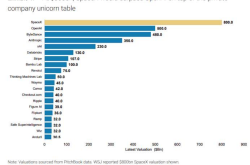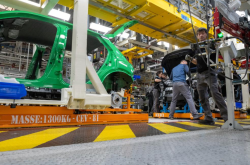The PK result is too surprising! In the OVM melee, which of the three Ultra models is superior?
![]() 06/09 2025
06/09 2025
![]() 587
587
Last month, Lei Technology conducted a horizontal review of small-screen flagship phones. Many readers expressed a desire to see the head-to-head competition between OVM's flagship models to determine which is currently the strongest top-tier flagship.
Since readers have made such a request, Lei Technology naturally invited the Xiaomi 15 Ultra, OPPO Find X8 Ultra, and vivo X200 Ultra for this comparison. However, unlike small-screen flagships, the main selling points of today's top-tier flagships are often their imaging capabilities. After all, being the "super-sized" version in an increasingly competitive photography market, manufacturers must showcase their best skills.
It can be said that the one who pulls off the most tricks in imaging and takes the most impressive photos is the current strongest top-tier flagship.
Without further ado, let's dive into the testing phase.
A showdown on image quality, but no clear winner?
First, let's talk about the most basic aspect of imaging - image quality. Nowadays, the performance of mobile phone image quality has improved dramatically compared to the previous two years. It is already difficult to distinguish between it and mirrorless cameras on mobile devices at a glance.
So, how do these three phones perform in terms of image quality? Lei Technology follows the most basic and practical comparison method, which is to test the main camera, medium telephoto, telephoto, 10x zoom, 30x zoom, and the center and edge image quality performance in bright and dim scenes.
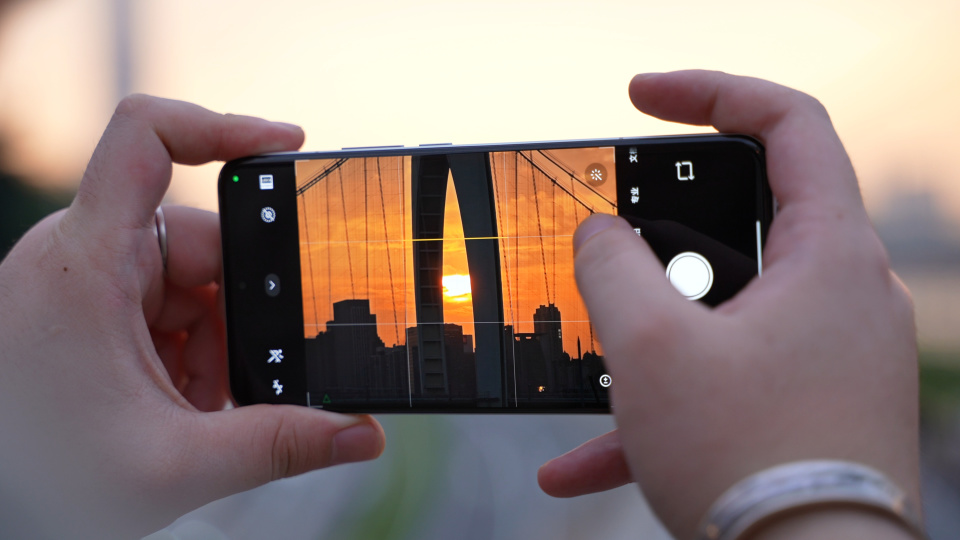
(Image source: Lei Technology production)
Starting with the main camera, if you look at the overall image quality, it's really hard to tell the difference between the three. Although Lei Technology has always hated comparing mobile phone image quality with cameras, to be honest, these three phones have achieved camera-level (closer to M43 format) imaging effects.

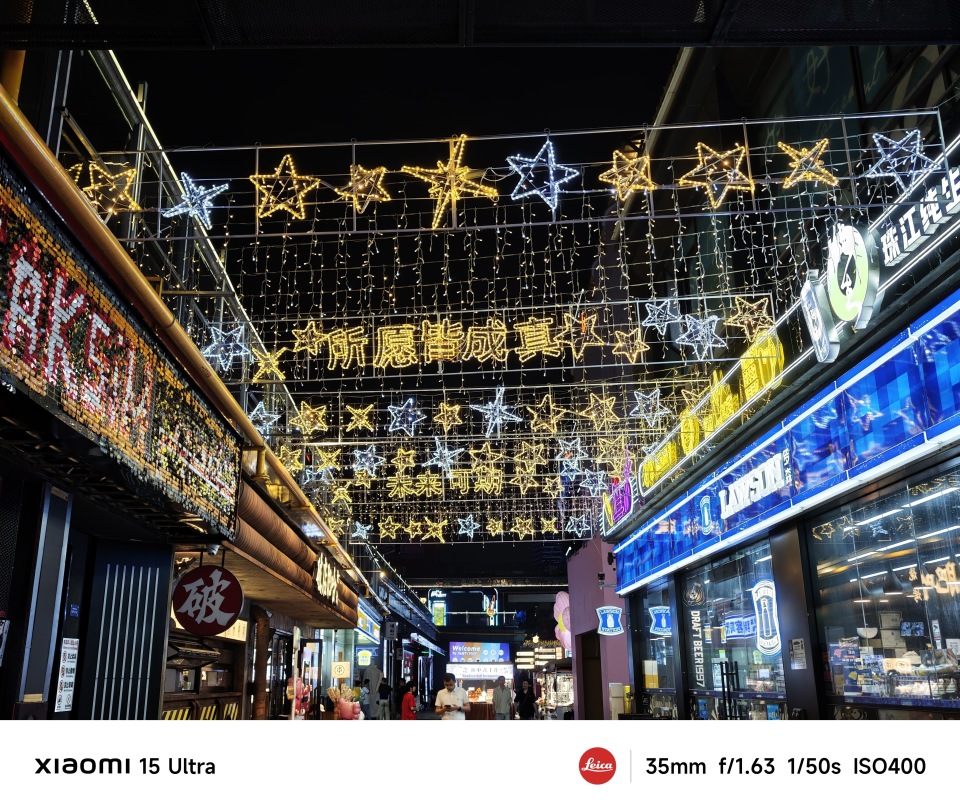
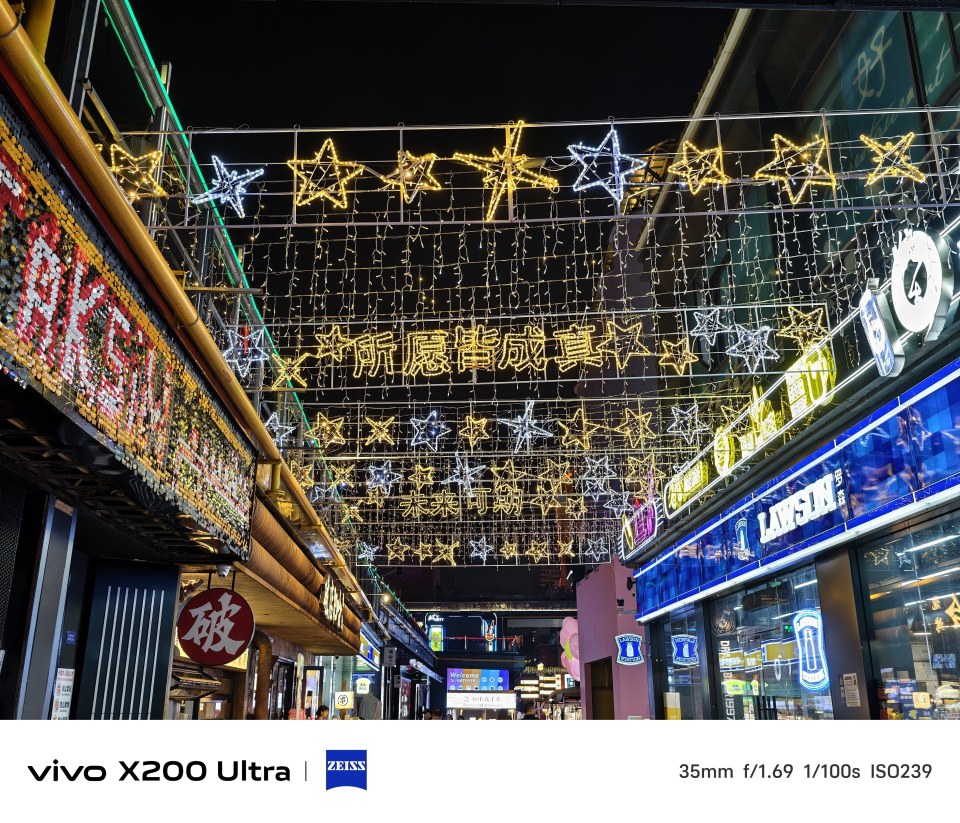
(Image source: Lei Technology production)
However, the differences in imaging styles among the three are very obvious: Xiaomi 15 Ultra's overall style is still serious and dark-toned, with shadow parts much more exaggerated than OV. Vivo's image color is the most vivid and prominent among the three. As for OPPO, its color style tends to be "plain" and is the closest to the colors seen by the naked eye.
However, we can see the difference among the three in terms of edge image quality. The vivo X200 Ultra is definitely the best at sharpening and detail processing. Not only are the textures and details of the grass preserved intact, but the overall image also looks more natural, without destroying the original feel of the image, making it the absolute first place.
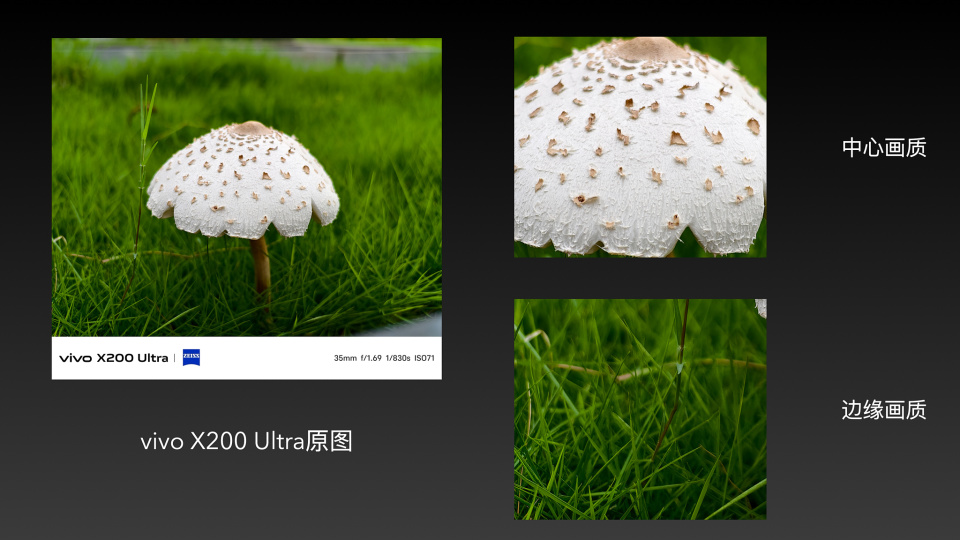
(Image source: Lei Technology illustration)
The second place goes to OPPO Find X8 Ultra. Although its sharpening performance is inferior to that of vivo X200 Ultra, it handles the grass texture appropriately, and the overall image clarity is also good.
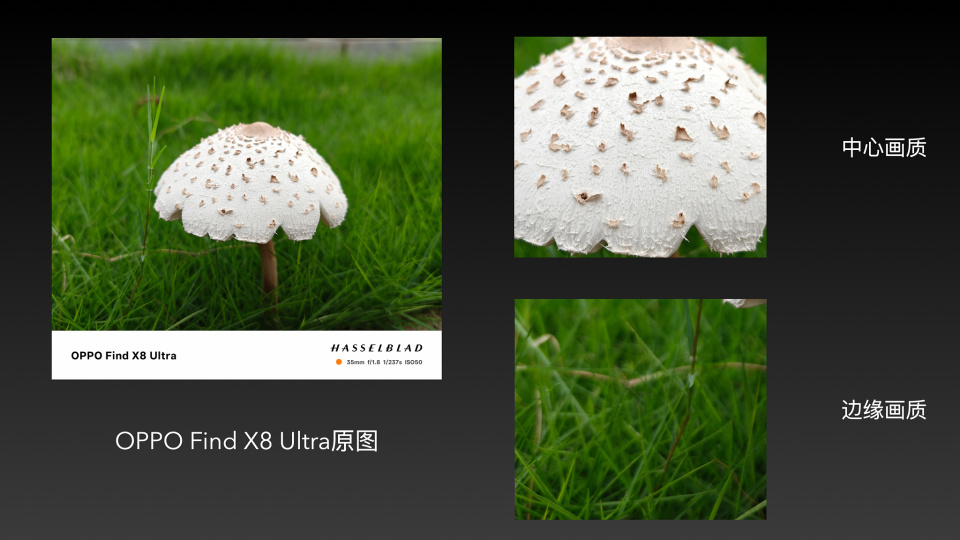
(Image source: Lei Technology illustration)
Xiaomi 15 Ultra is somewhat disappointing. The grass texture is very messy, and it is difficult to see the original details. The sharpening is also the most obvious among the three, with a very serious sense of algorithmic smearing.
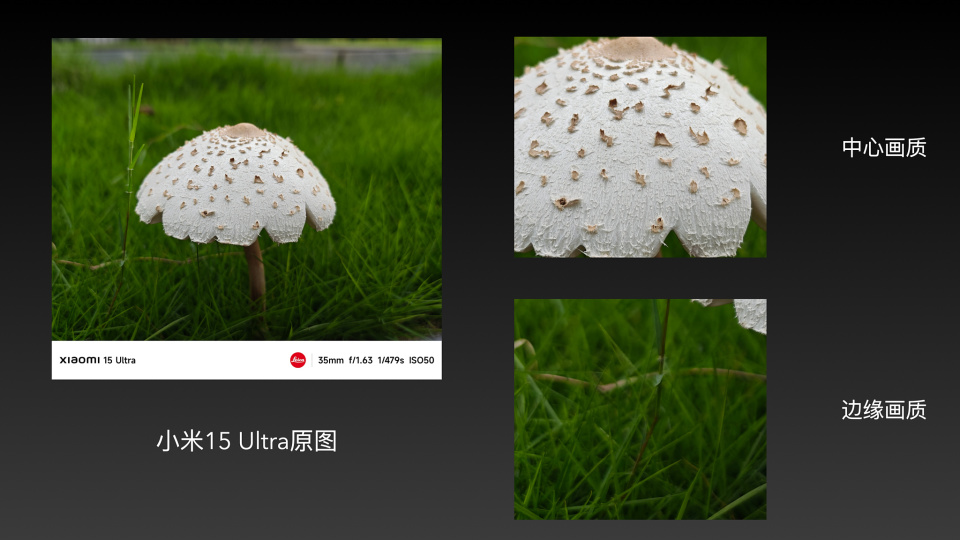
(Image source: Lei Technology illustration)
When it comes to the 50mm-equivalent focal length cropped from the main camera (46mm for Xiaomi, 47mm for OPPO, and 50mm for vivo), there is almost no difference among the three. The image quality in the center and edges is very sharp and clear.
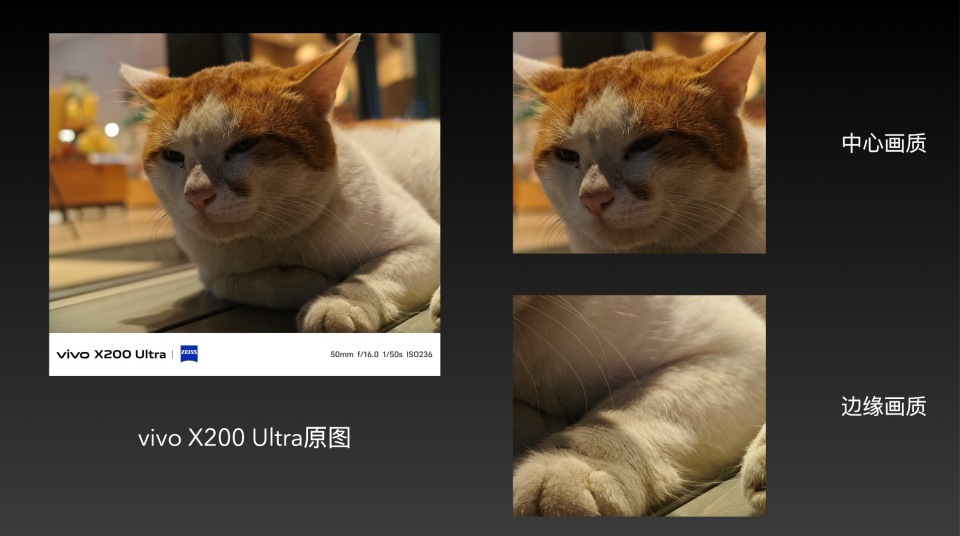
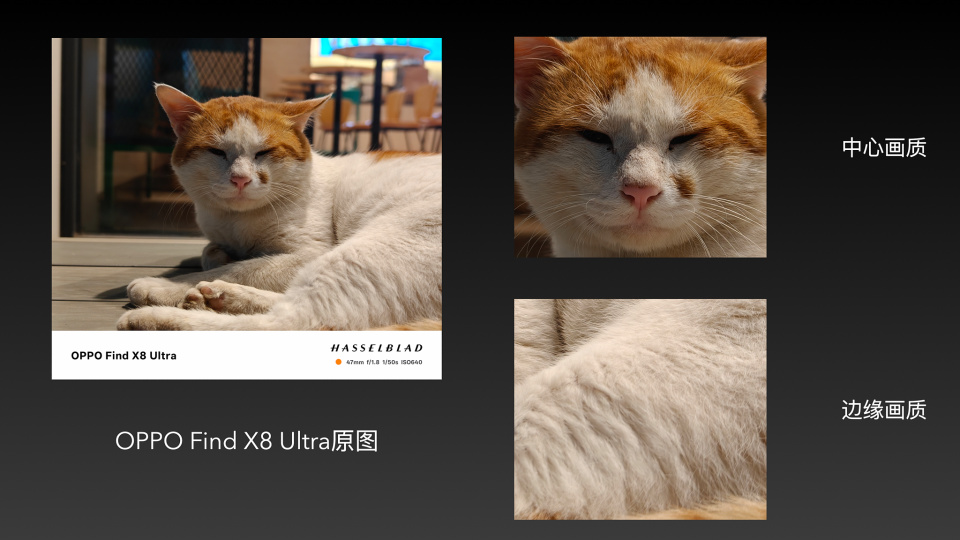
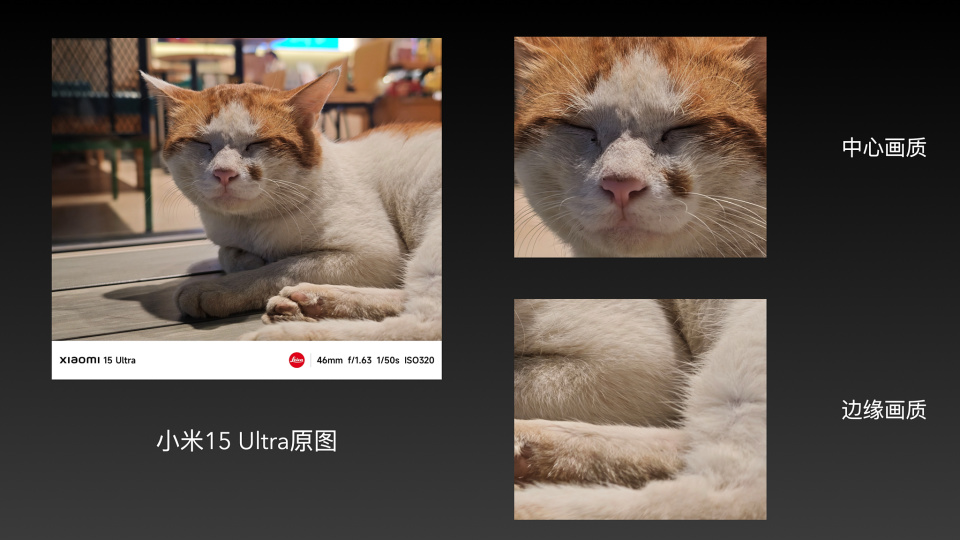
(Image source: Lei Technology production)
It seems that everyone knows that 50mm is one of the focal lengths with the highest usage rate in users' daily lives, so naturally, more effort has been put into this focal length.
When it comes to telephoto, vivo X200 Ultra and OPPO Find X8 Ultra are at a disadvantage in terms of hardware. After all, the former only has one telephoto lens with a focal length of only 85mm, while the latter, although equipped with two high-quality telephoto lenses, only has a pixel count of 50 million, putting it at a natural disadvantage in some extreme telephoto tests.
However, this is only theoretical. Moreover, mobile phone photography requires a combination of hardware and software to maximize its potential. To determine who is stronger, we still need to look at actual sample photos.

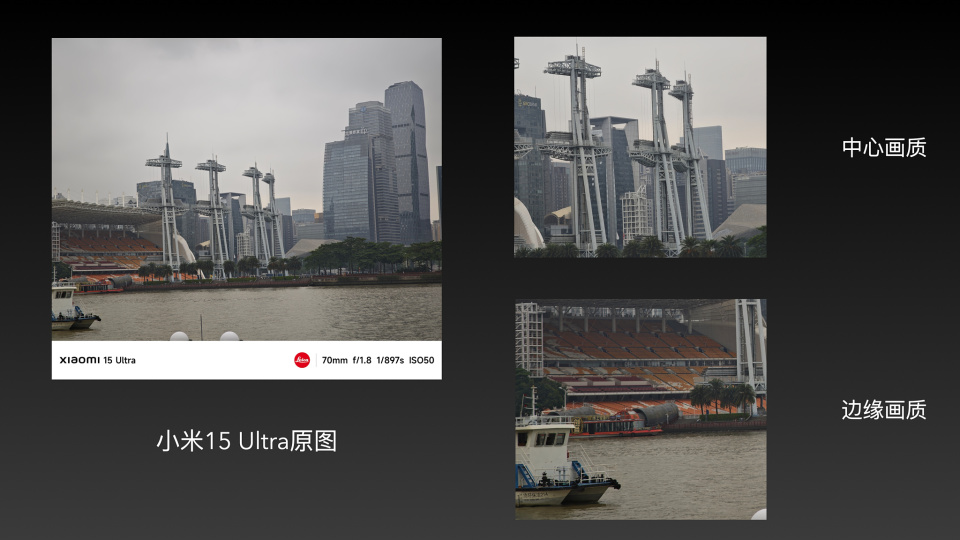
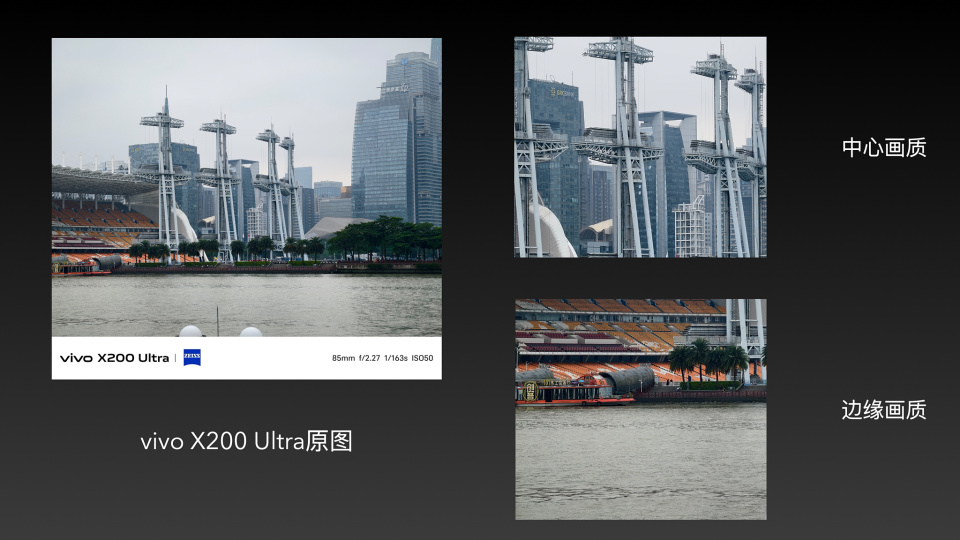
(Image source: Lei Technology production)
Let's start with the 3x telephoto (vivo is actually 3.3x due to the main camera's focal length). Regardless of their respective imaging styles, vivo X200 Ultra is indeed the clearest among the three. Both the architectural details in the center image quality and the LOGO in the edges are the most well-preserved. In contrast, OPPO and Xiaomi have a poorer look and feel. However, Lei Technology personally believes that this is mainly due to vivo's brighter imaging style, as the on-site weather during the shoot was indeed poor, and the scene seen by the naked eye was far from as sharp and bright as in the photos.
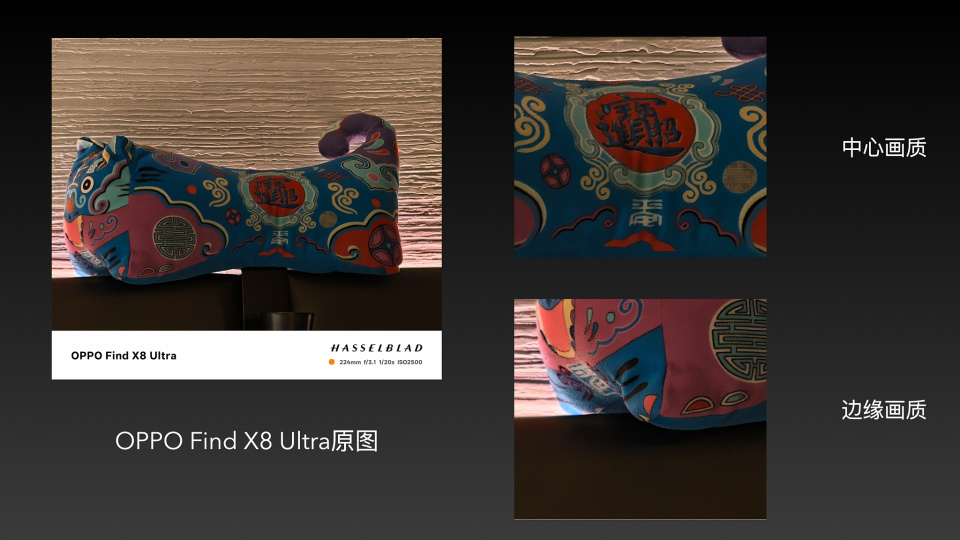
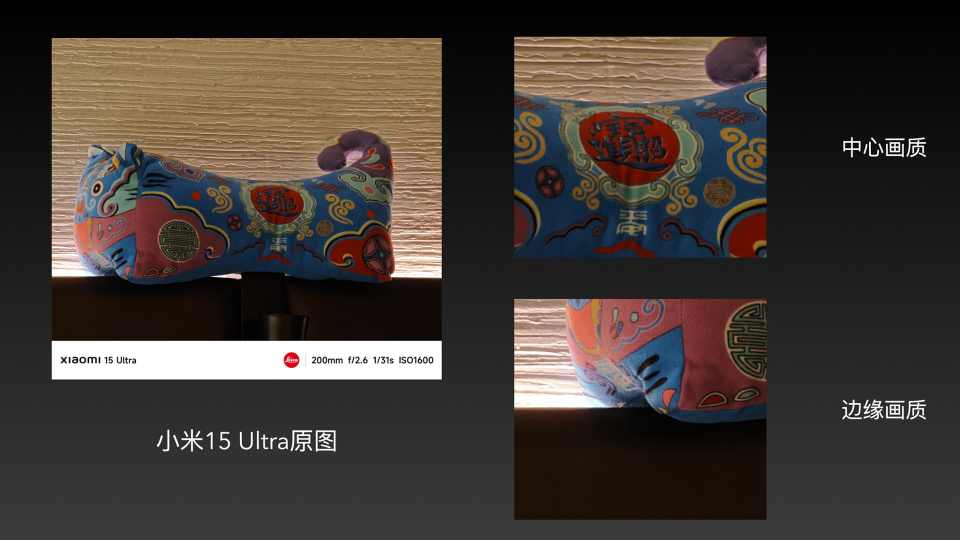
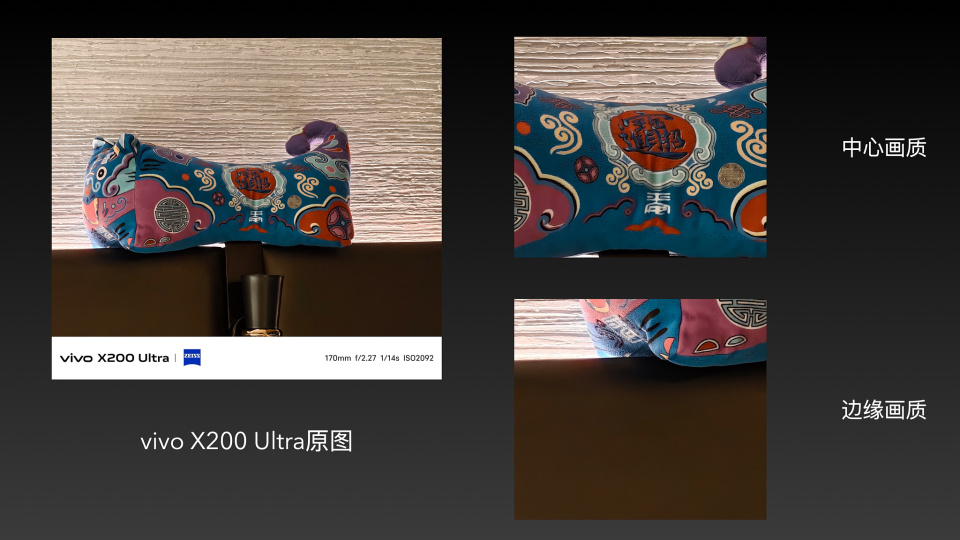
(Image source: Lei Technology production)
When we zoom in to around 8x, the ever-victorious vivo X200 Ultra starts to struggle. Not only is the overall image color whitish, but the lighting effects are barely preserved, giving it a somewhat "false" appearance with very obvious AI intervention traces. This is even more evident in the center image quality, where the words on the doll are the blurriest among the three, and the details cannot withstand close scrutiny. It should be noted that the focal length of vivo X200 Ultra is the shortest at 170mm, a performance that Lei Technology did not expect.
In this segment, Xiaomi 15 Ultra performs the best. Its color reproduction and detail preservation are the best among the three. However, the highlight suppression in the edge image quality is not well done, and some details of the patterns near the light source are lost. Nevertheless, the flaws do not overshadow its merits. OPPO Find X8 Ultra is the complete opposite: its center image quality is relatively average, but its edge image quality is the best.
Since we're talking about highlight suppression, it's worth mentioning that OPPO Find X8 Ultra's ability to suppress the brightness and restore the colors of high-brightness objects is indeed terrifying, even to the point of being on an entirely different level.
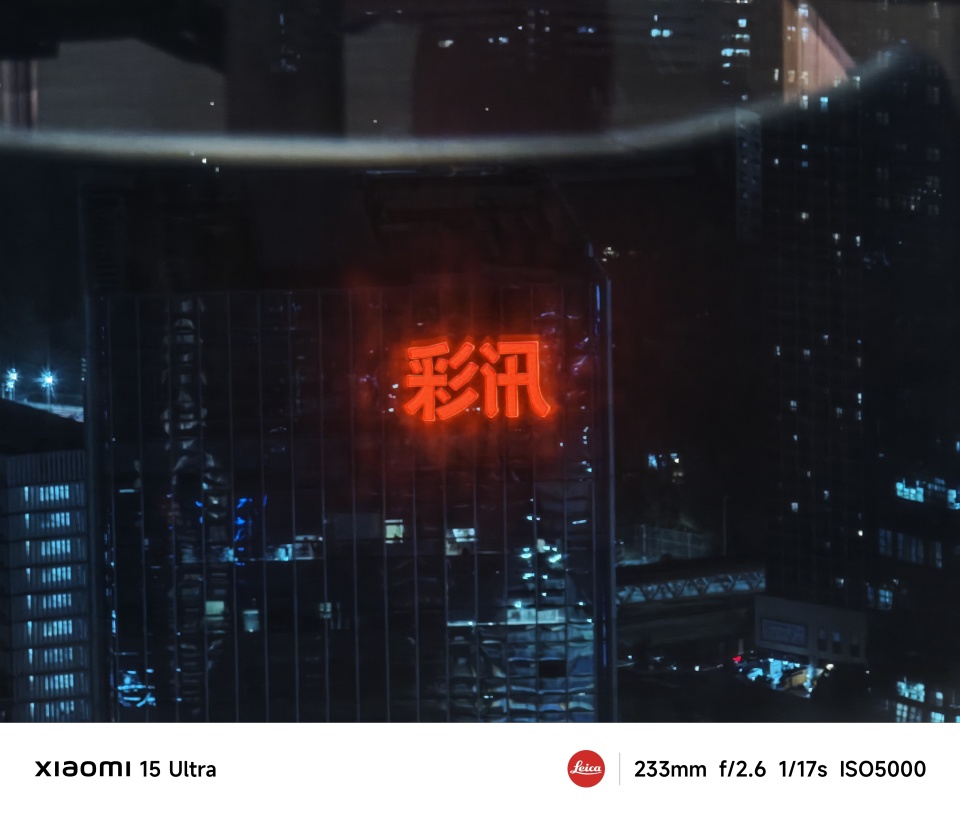


(Image source: Lei Technology production)
First, let's talk about the test conditions. Shooting the sign of the opposite building through chaotic indoor lighting and glass is a very high challenge for mobile phones, requiring them to handle both indoor and outdoor light sources simultaneously.
We can clearly see the difference among the three. vivo X200 Ultra leads the pack in flipping over, not only restoring the red sign to orange-red but also failing to handle the indoor light source properly. Although Xiaomi 15 Ultra restores the sign color relatively well, for some reason, the overall image color temperature becomes colder, giving it an unrealistic feel. OPPO Find X8 Ultra, the only one equipped with a color restoration lens, is obviously the best performer among the three, handling both indoor and outdoor light sources well, with a very obvious advantage.
Finally, we zoom the telephoto all the way to 700mm, where only AI algorithms can be involved to produce results, revealing a discontinuous gap for the first time.
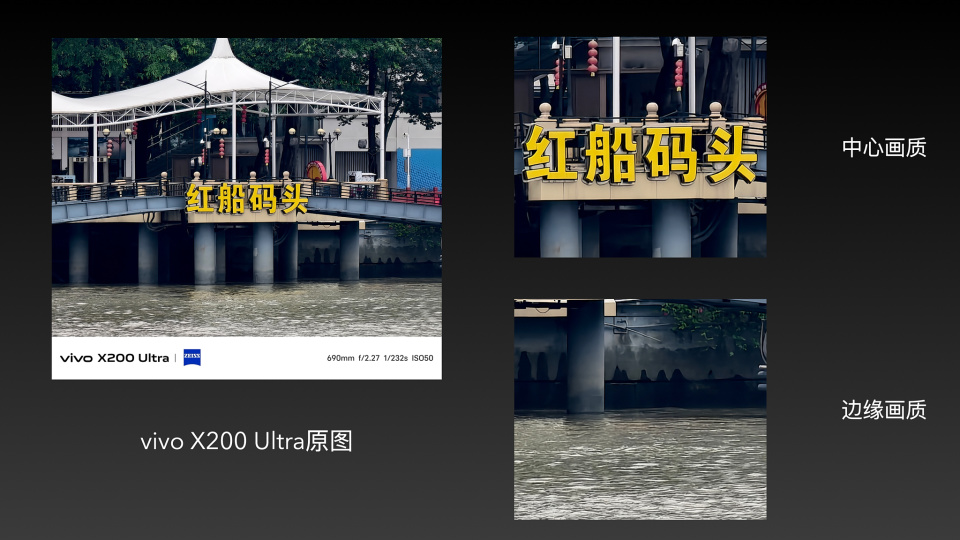
(Image source: Lei Technology illustration)
Let's start with vivo again. Its problem is very obvious: the AI algorithm intervention is too obvious, with the words "Red Boat Pier" looking more like they were directly P'ed onto the layer. Moreover, by closely observing the dark parts of the background, we can see that the dark details are severely lost, making it look somewhat unnatural.
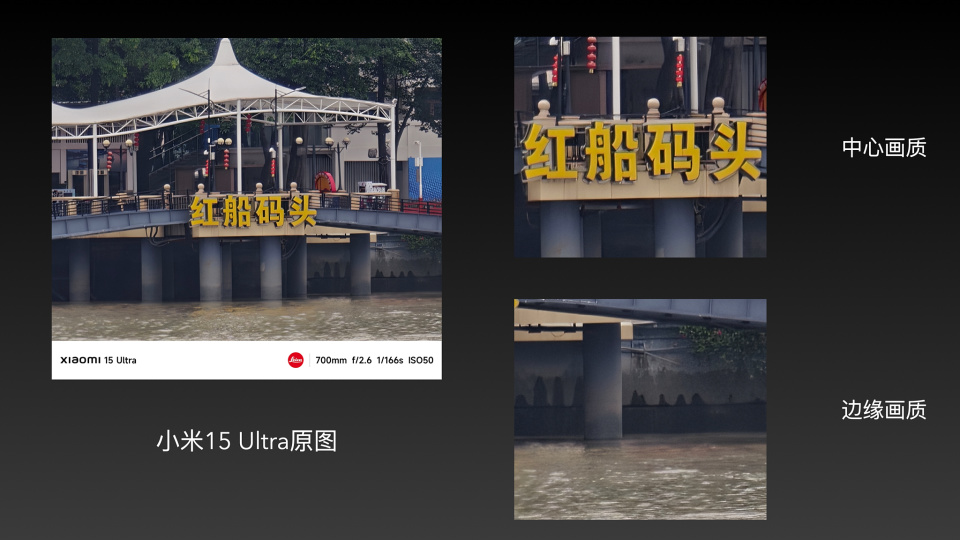
(Image source: Lei Technology production)
Xiaomi's performance is also a bit "abstract". Although the AI algorithm traces are not obvious, the dark details are still preserved well, and the overall image is clean. However, it is the one with the most out-of-focus occurrences among the three. Lei Technology clearly felt that it had stabilized the phone, but upon exporting, it was still out of focus. Perhaps this is the drawback of too little algorithm intervention.
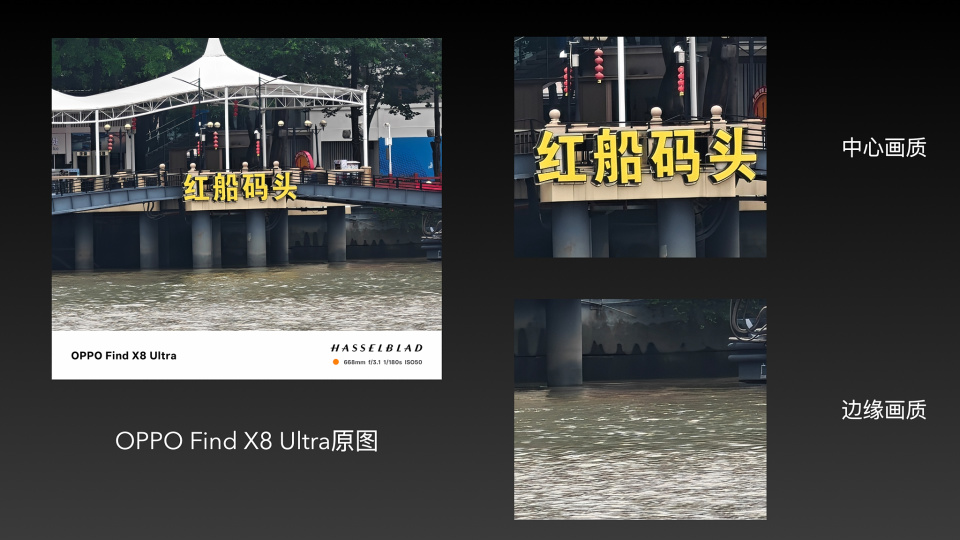
(Image source: Lei Technology production)
OPPO Find X8 Ultra is a clear winner in this segment, resolving all the issues encountered by Xiaomi and vivo. If the focal length on the watermark is covered, many readers might think this photo was taken at a 200mm focal length.
After discussing basic image quality, let's take a look at the performance in various scenarios. The first to be addressed is portrait photography. Like image quality, mobile phones have become increasingly skilled in portrait photography over the past two years. Sometimes, Lei Technology even feels lazy to carry a camera when going out to take portraits because mobile phones are not only convenient to carry but also offer "automatic retouching and beautification," making things much easier.
However, for Xiaomi 15 Ultra, this segment is somewhat disadvantageous. After all, Xiaomi 15 Ultra's main selling point has never been portrait photography, and Xiaomi's technical accumulation in this field is far inferior to that of OPPO and vivo. Therefore, in this segment, we mainly focus on the competition between OPPO and vivo, the two "portrait masters."
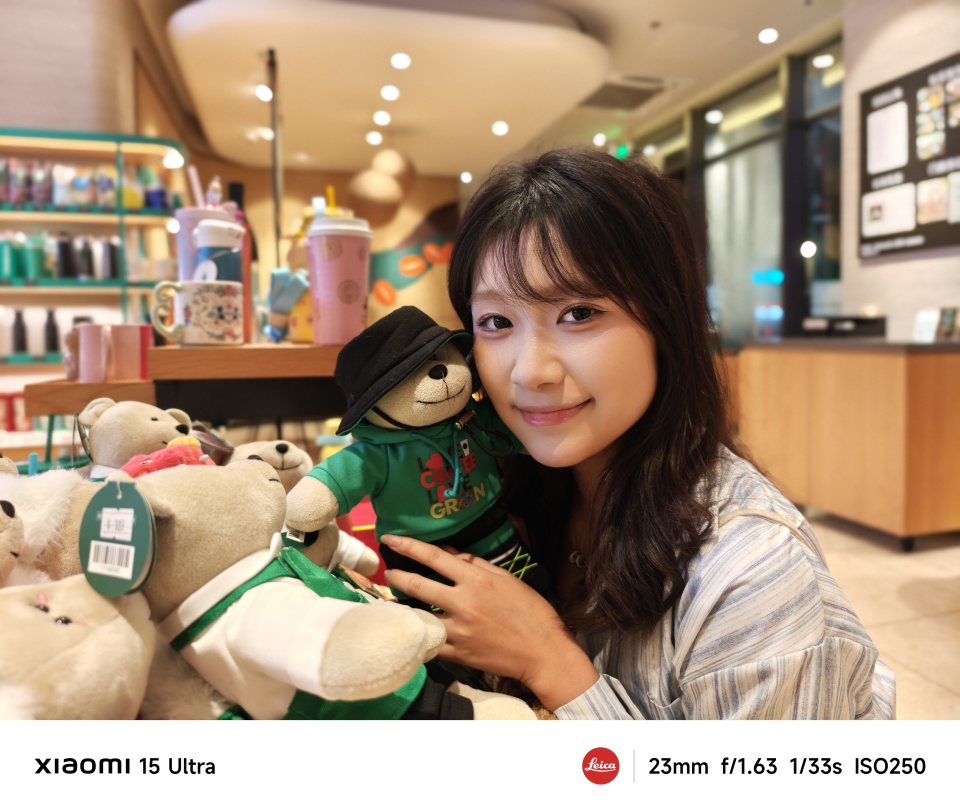
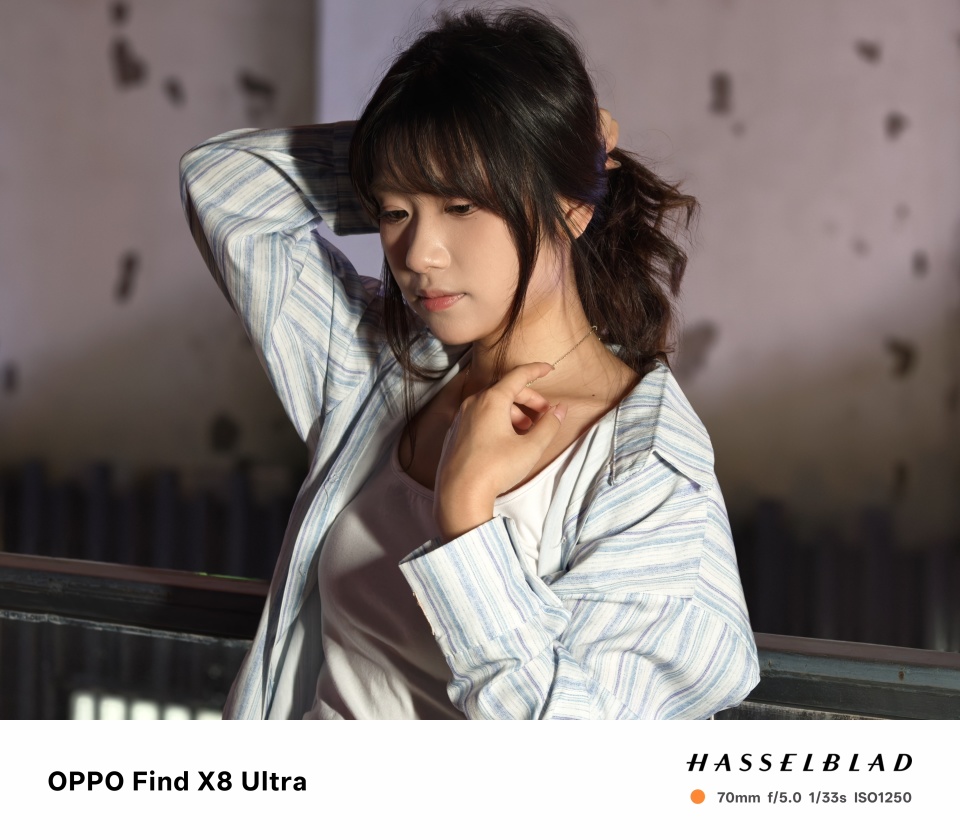
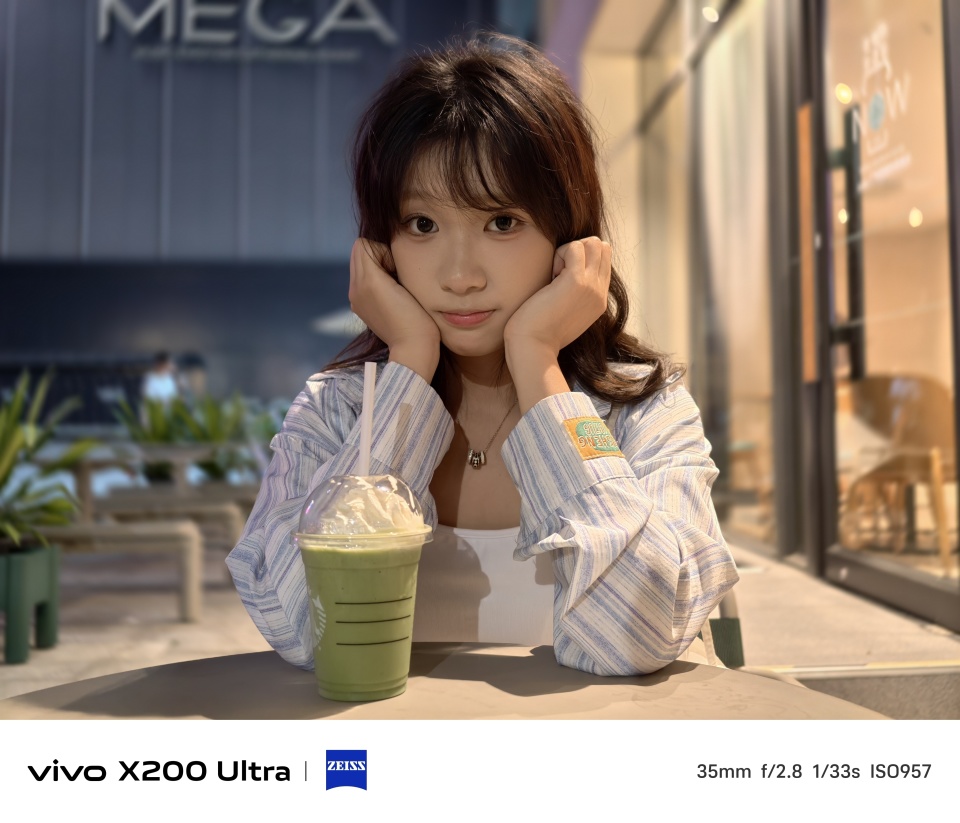
(Image source: Leikeji Production)
In an indoor environment with excellent lighting conditions, the OPPO Find X8 Ultra and vivo X200 Ultra can be said to be neck and neck. Not only do they each have their unique understanding of portrait photography, but they also achieve professional standards in skin tone, image sharpening, hair cutout, and beauty enhancement.
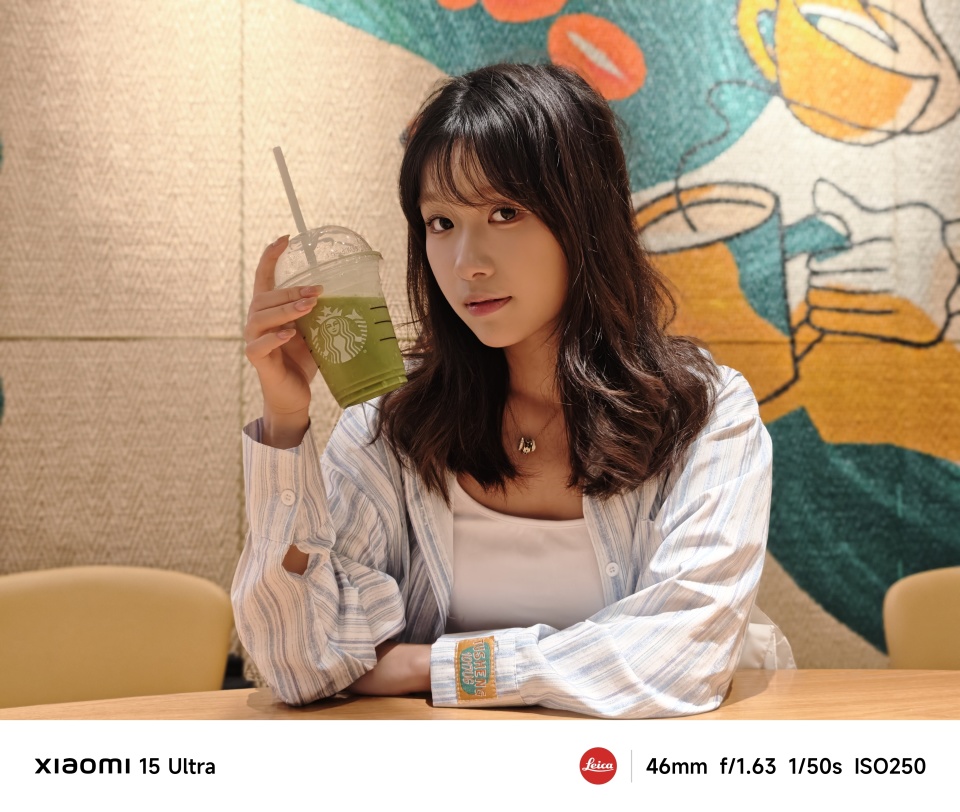
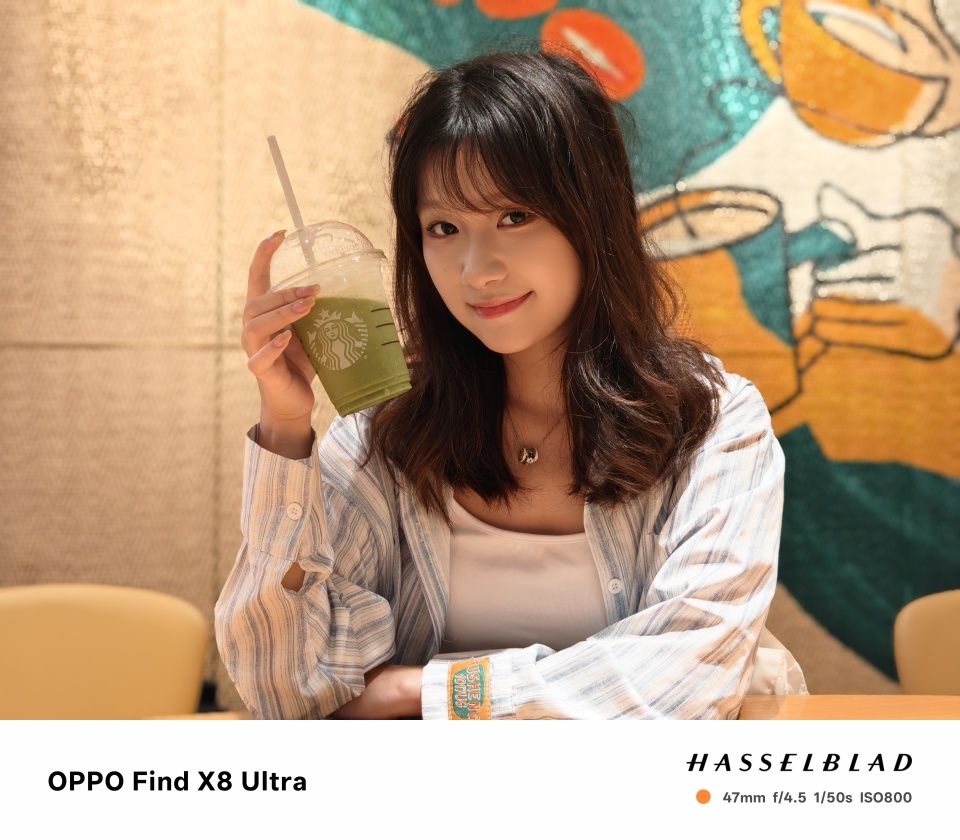
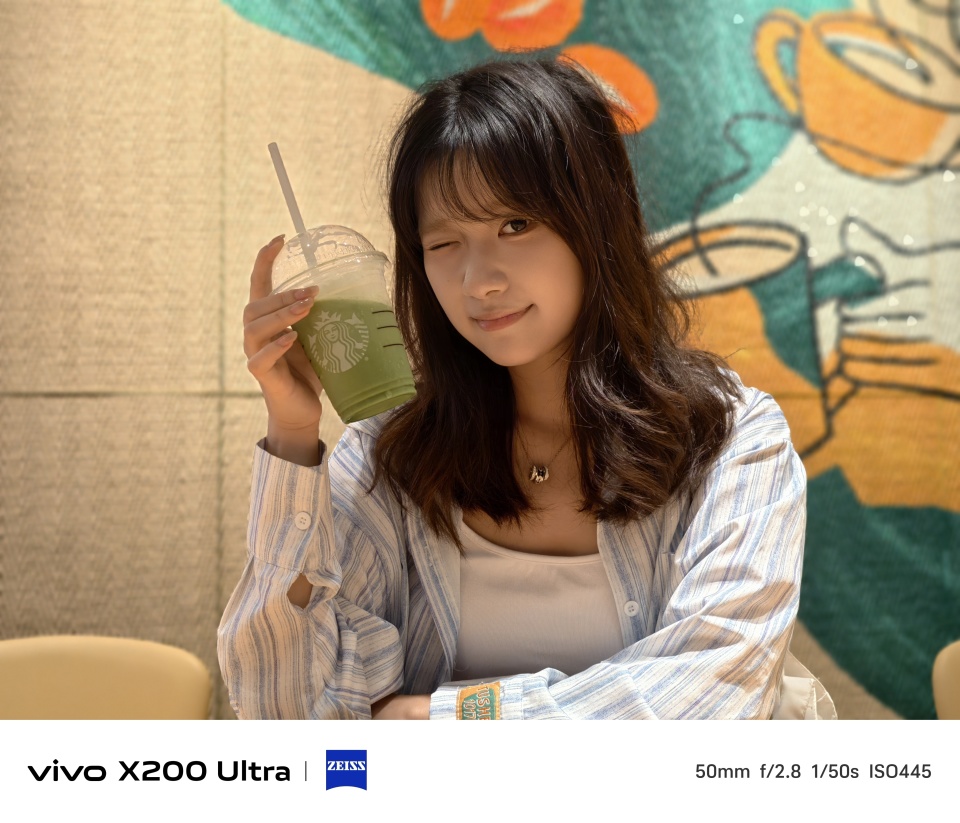
(Image source: Leikeji Production)
The OPPO Find X8 Ultra has an interesting nickname, "Electronic Ejiao." In the simplest terms, portraits taken with this phone have more "life force" and appear more energetic.
From this set of sample photos, we can see that the OPPO Find X8 Ultra excels in skin tone beautification. Not only does the model's entire face look more comfortable, but her lips also appear more rosy.
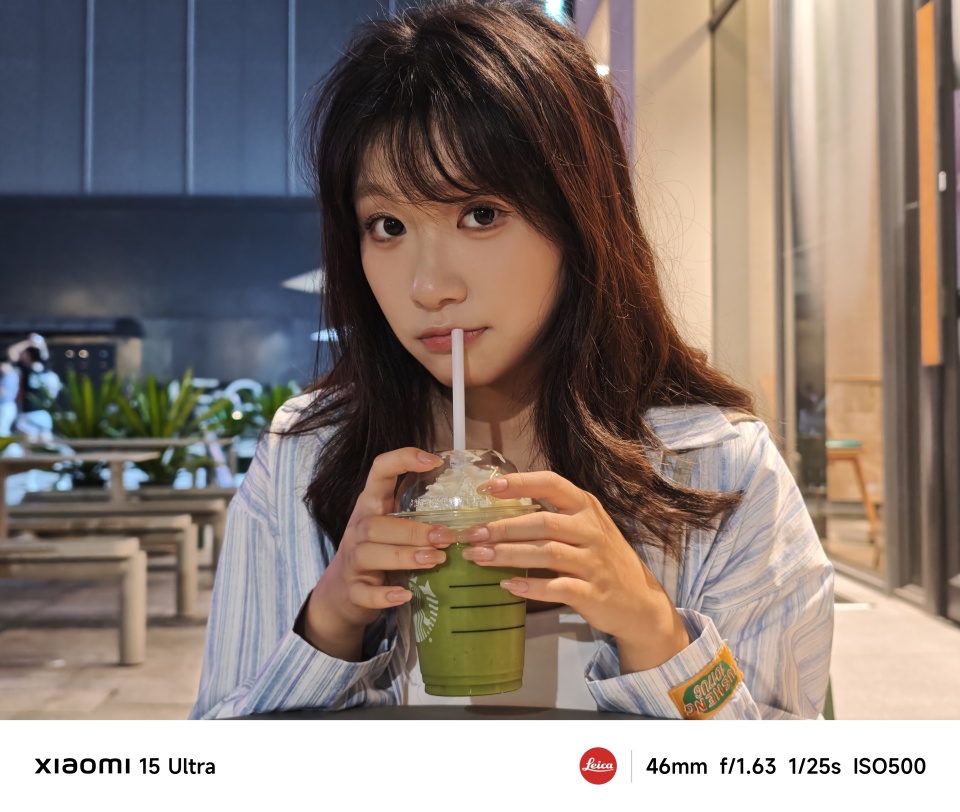
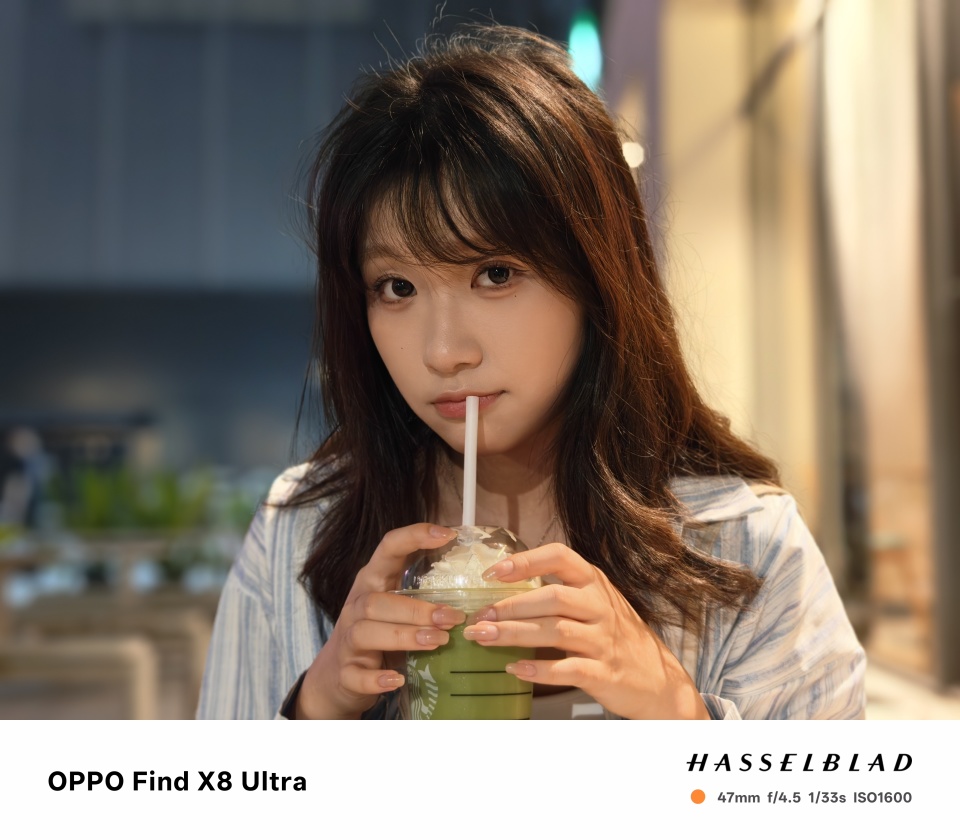
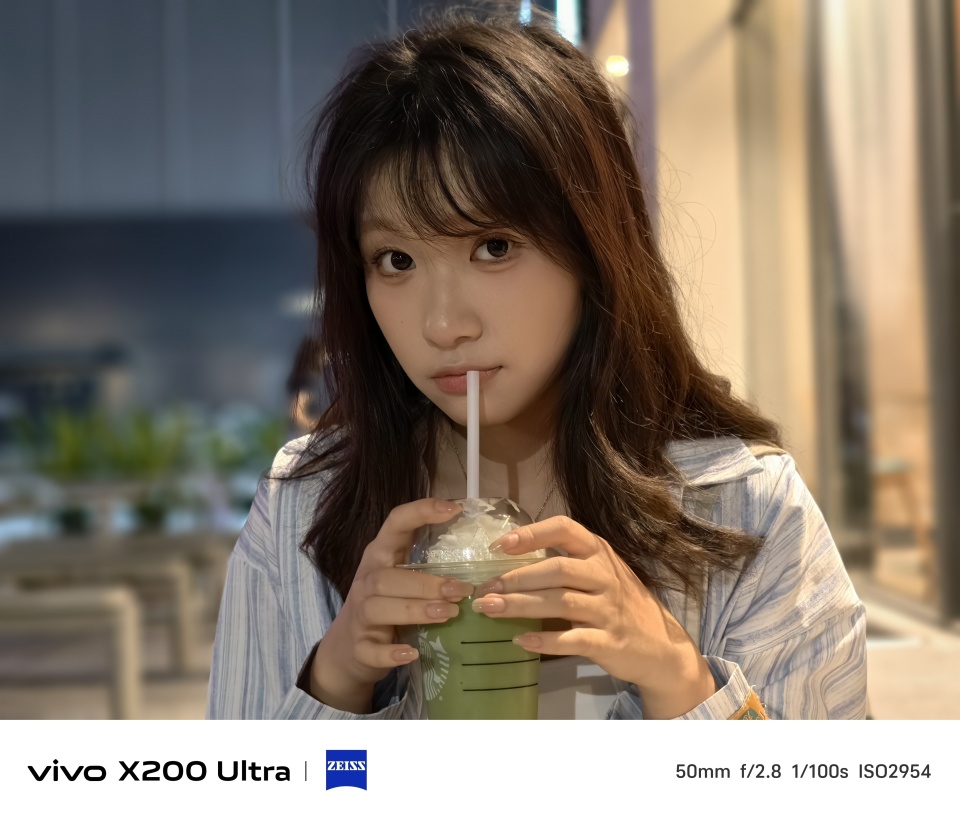
(Image source: Leikeji Production)
Let's move the scene outdoors. Although the lighting here is not as good as indoors, it is more than sufficient for night portrait photography.
The results are consistent with the previous round. The OPPO Find X8 Ultra outperforms the vivo X200 Ultra by a significant margin in terms of skin tone, almost to the point of overshadowing it. However, vivo is not without its merits. From the left shoulder of the model, we can see that part of OPPO's clothing and background have "merged" together, while vivo distinguishes between the two very clearly.
Next, we increase the difficulty by moving the shooting location to a scene with a cluttered lighting environment. Let's see which one is stronger, OPPO or vivo.
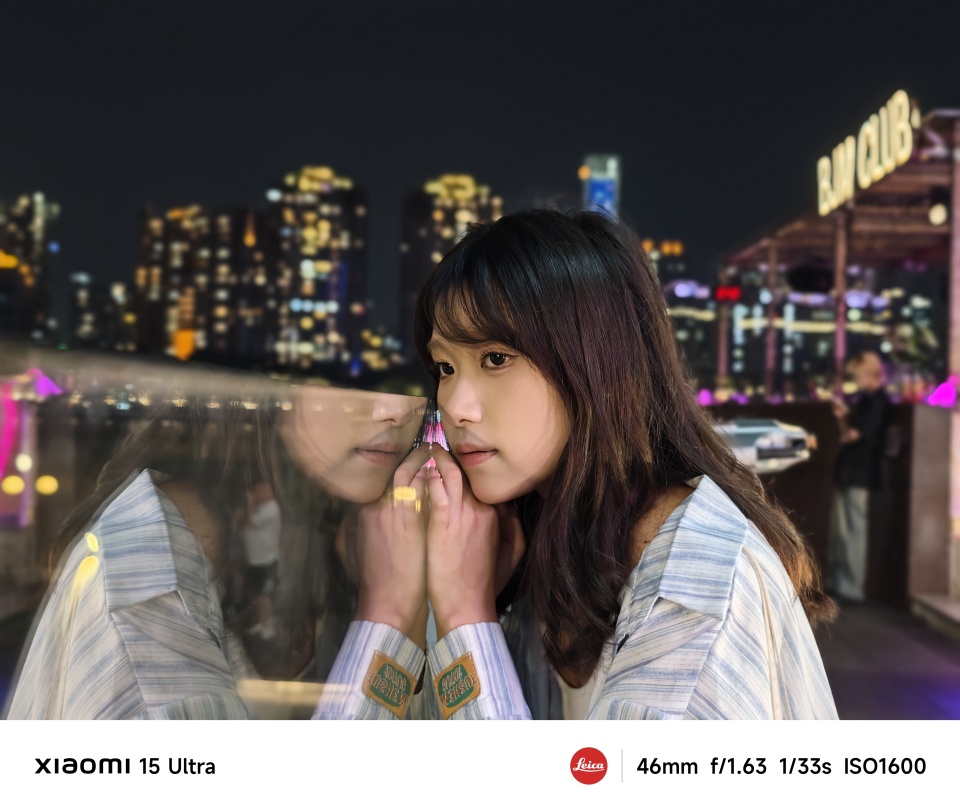
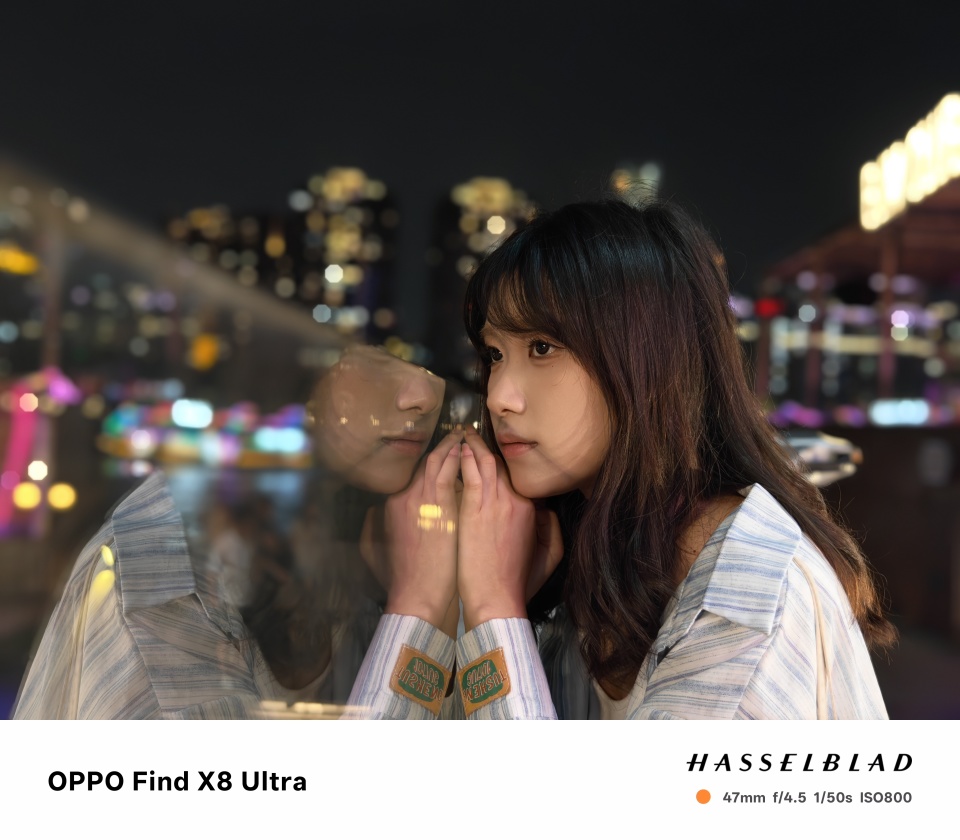
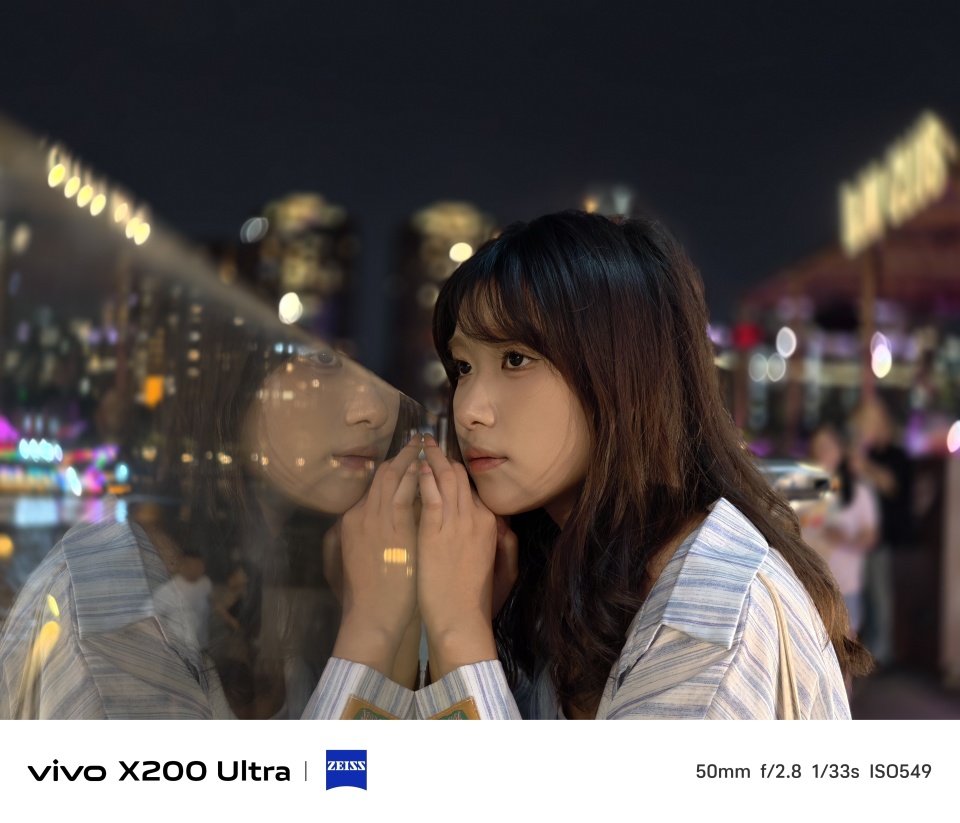
(Image source: Leikeji Production)
In this segment, OPPO and vivo are truly evenly matched. OPPO still leads in skin tone restoration, but there is a slight gap with vivo in blurring background light sources. Upon closer inspection, we can also find that vivo's background has a slight swirling blur effect, which is a common portrait photography technique that further highlights the importance of the subject. OPPO and Xiaomi are slightly more reserved in their handling of light spots, achieving good blurring without excessive processing.
If we observe closely, we can also find that vivo and Xiaomi's cutout of the model's hair is not very natural, especially vivo, which directly eliminates this part.
But is this the limit of night portrait photography? Of course not. Xiao Lei has additionally found several more extreme scenarios.
The first is a scene with almost no lighting but reflective glass. In the past, whether using a mobile phone or a camera to take portraits in such scenarios, there would generally be two problems: one is that excessive noise in the image makes the entire photo look particularly dirty; the other is that the red light source causes the white balance of the entire photo to be severely red-shifted, with the model's skin tone, clothing, and background all tinged with a noticeable red hue.
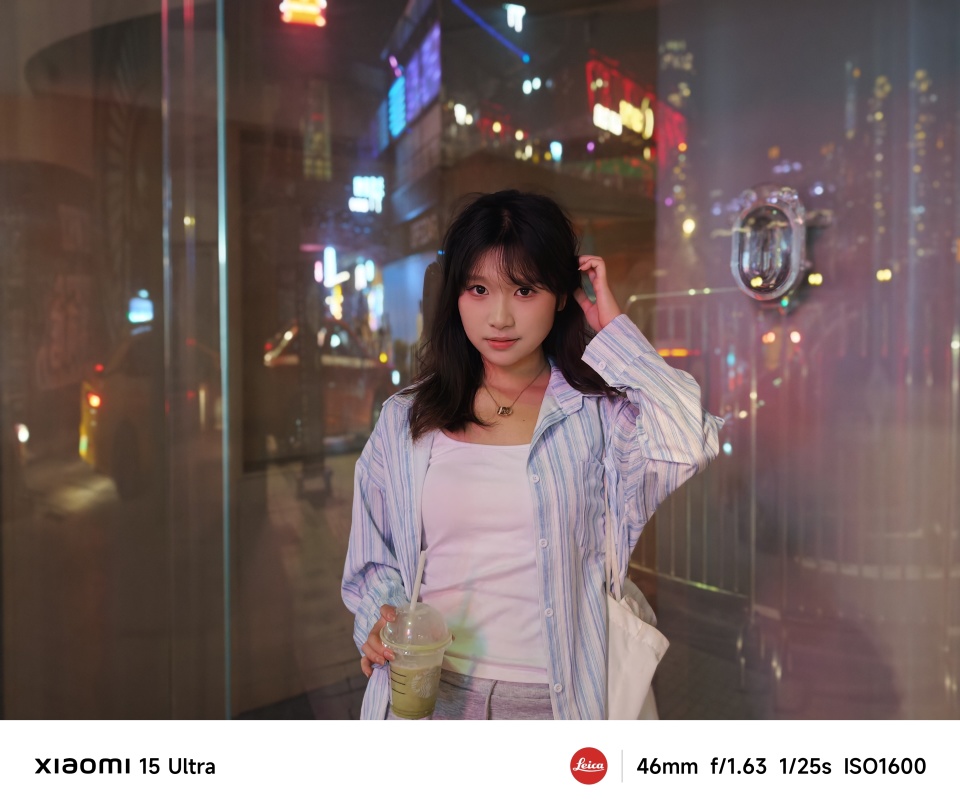
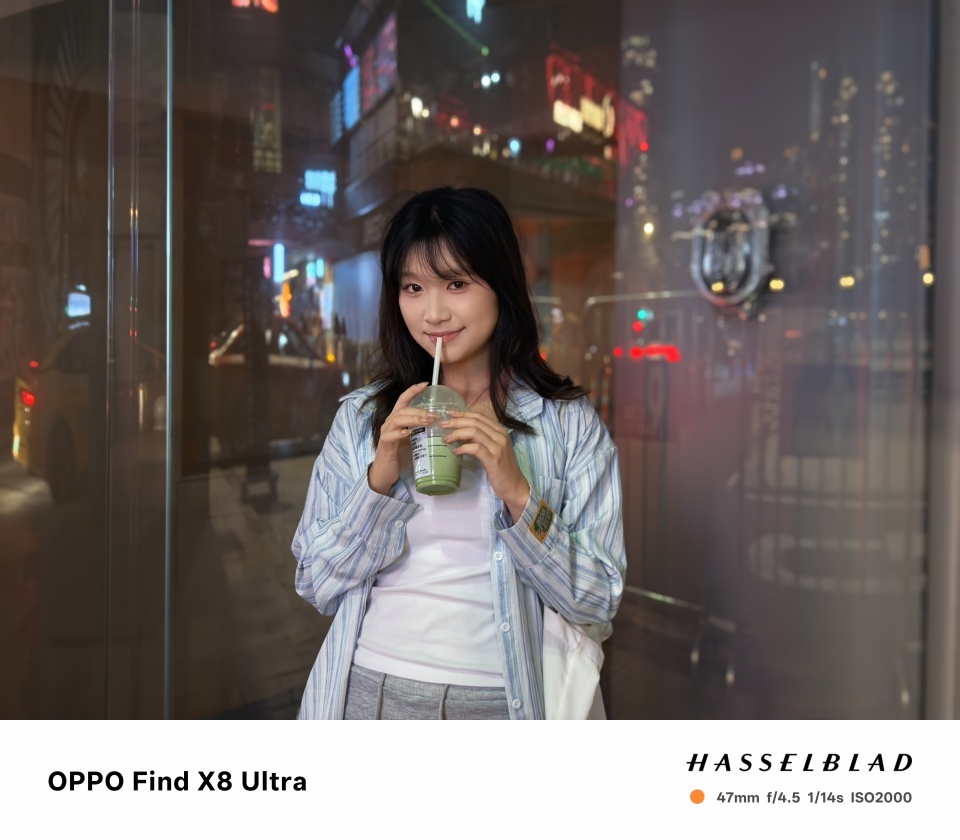

(Image source: Leikeji Production)
After comparing the previous rounds, you should be able to guess who the winner is. Yes, it's still OPPO. Xiaomi and vivo's images have an overall reddish color temperature. Among them, Xiaomi's performance is commendable, but vivo's is indeed a bit unsightly.
The second is a scene with a yellow spotlight overhead, which is a big no-no in portrait photography and can easily lead to disasters if not handled carefully.
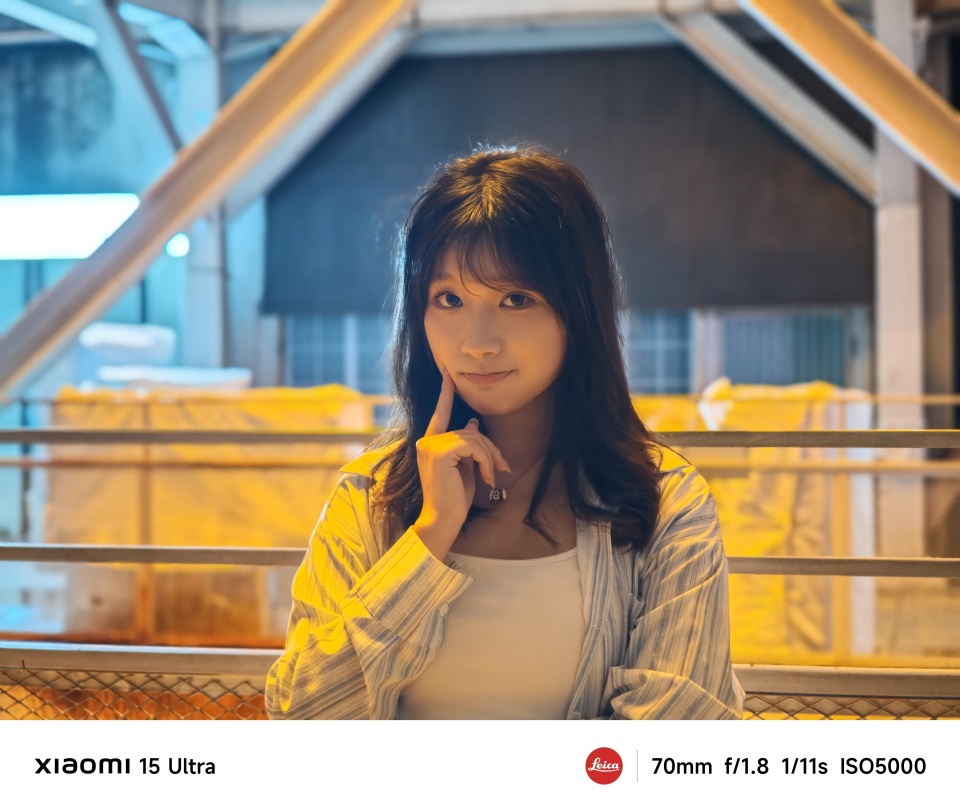
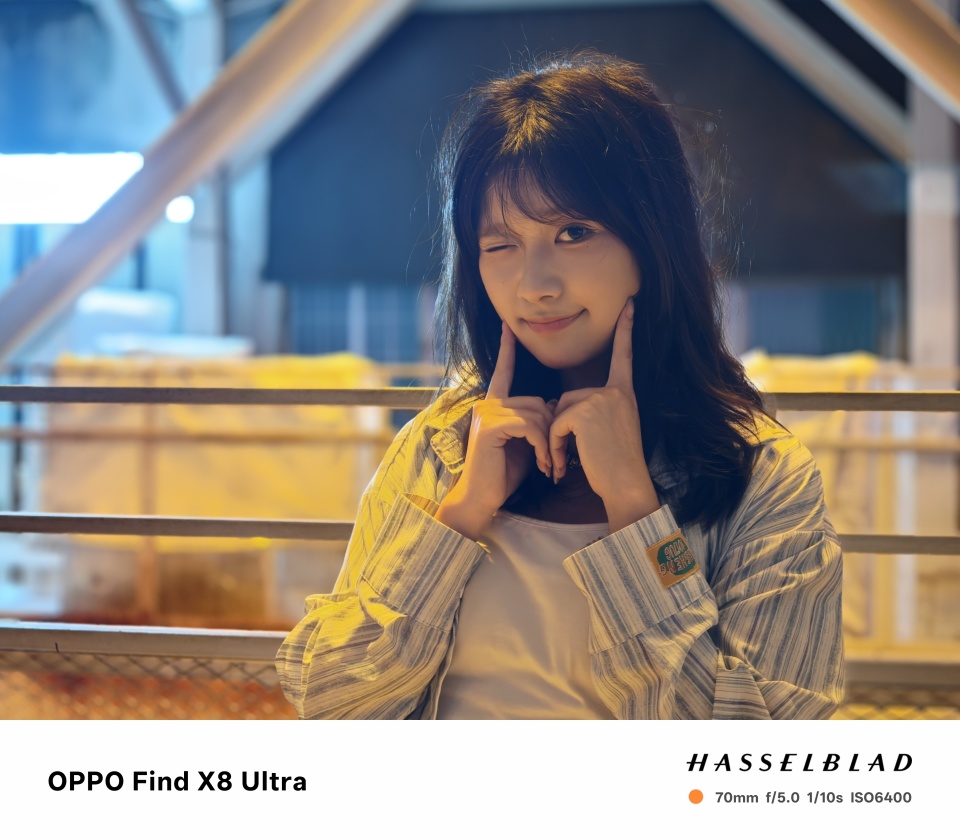
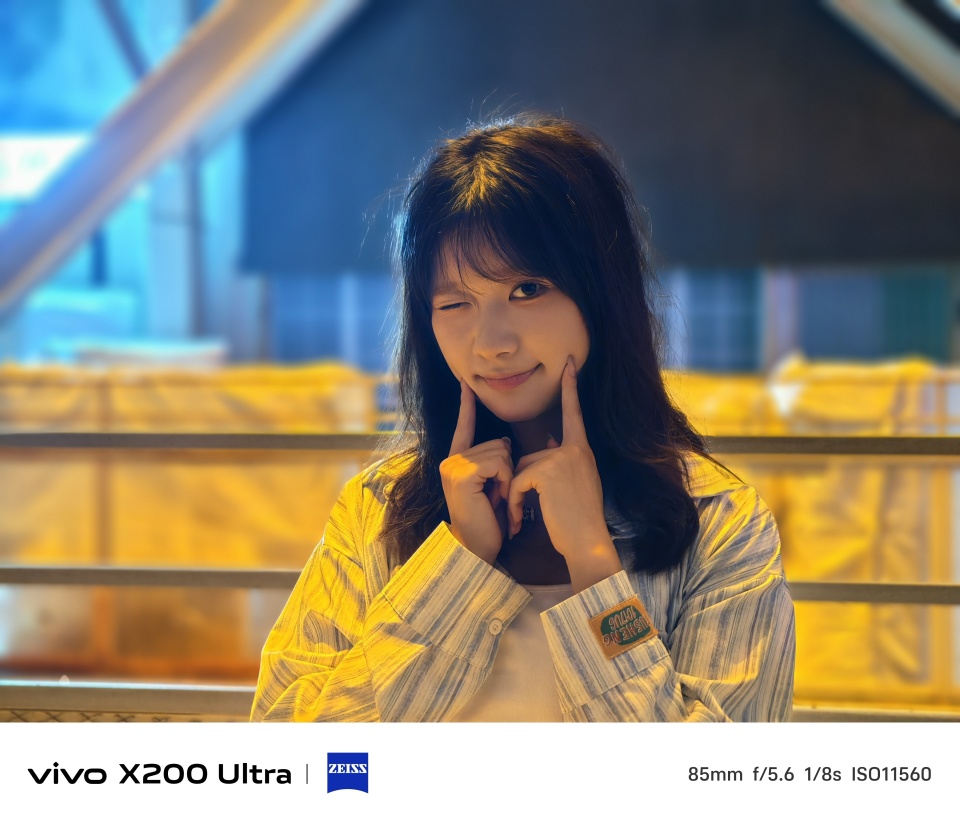
(Image source: Leikeji Production)
But OPPO once again withstood the pressure, restoring the model's original skin tone as much as possible, while vivo and Xiaomi were completely skewed by the yellow light, making the characters and the overall image appear severely yellowish.
Some readers may question whether Xiao Lei cheated for OPPO by adjusting the shooting position beforehand or editing the photos afterward. Here, Xiao Lei also releases two live-action photos. From the screen, we can see that the OPPO Find X8 Ultra has already adjusted the skin tone to a relatively natural state before even pressing the shutter button. It can only be said that this separate Danxia True Color lens has indeed played its role.
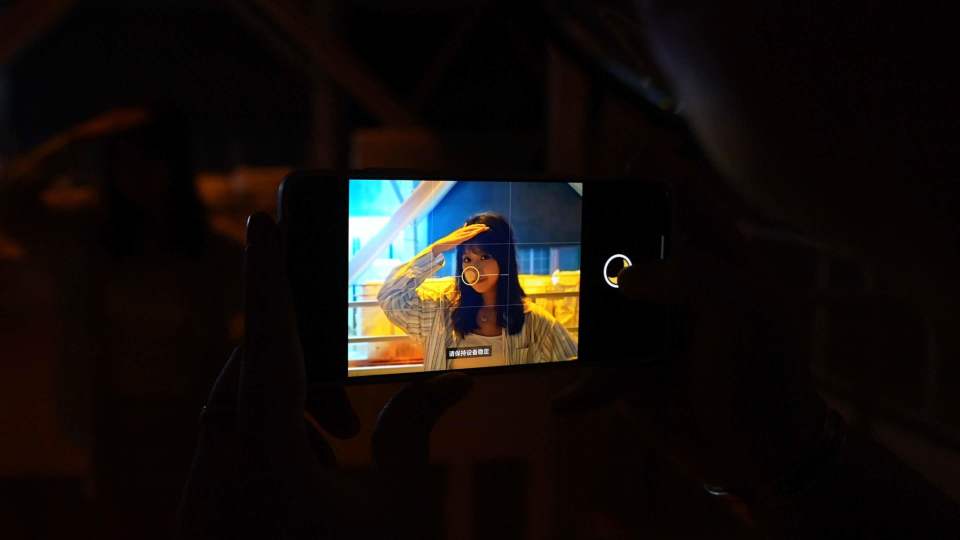
(Top: vivo, Bottom: OPPO)
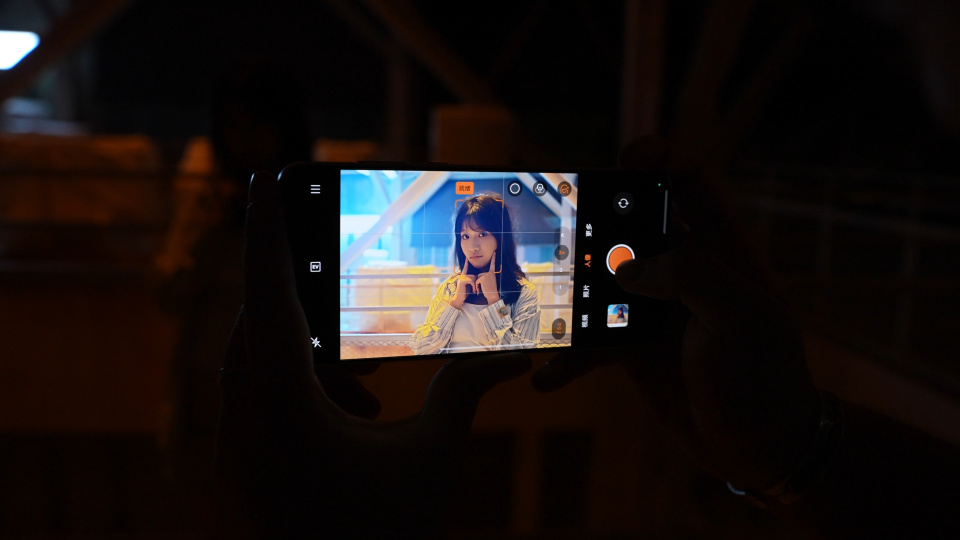
(Image source: Leikeji Production)
In fact, Xiao Lei has also taken many scenes under similar extreme lighting conditions, but the results are unanimously in favor of OPPO. Therefore, I won't include too many comparison samples here.
Almost forgot, OPPO has another trump card in portrait photography – True Color ProXDR, which can fully retain the highlight details of HDR photos. When viewed on devices that support HDR format, the difference is very noticeable.
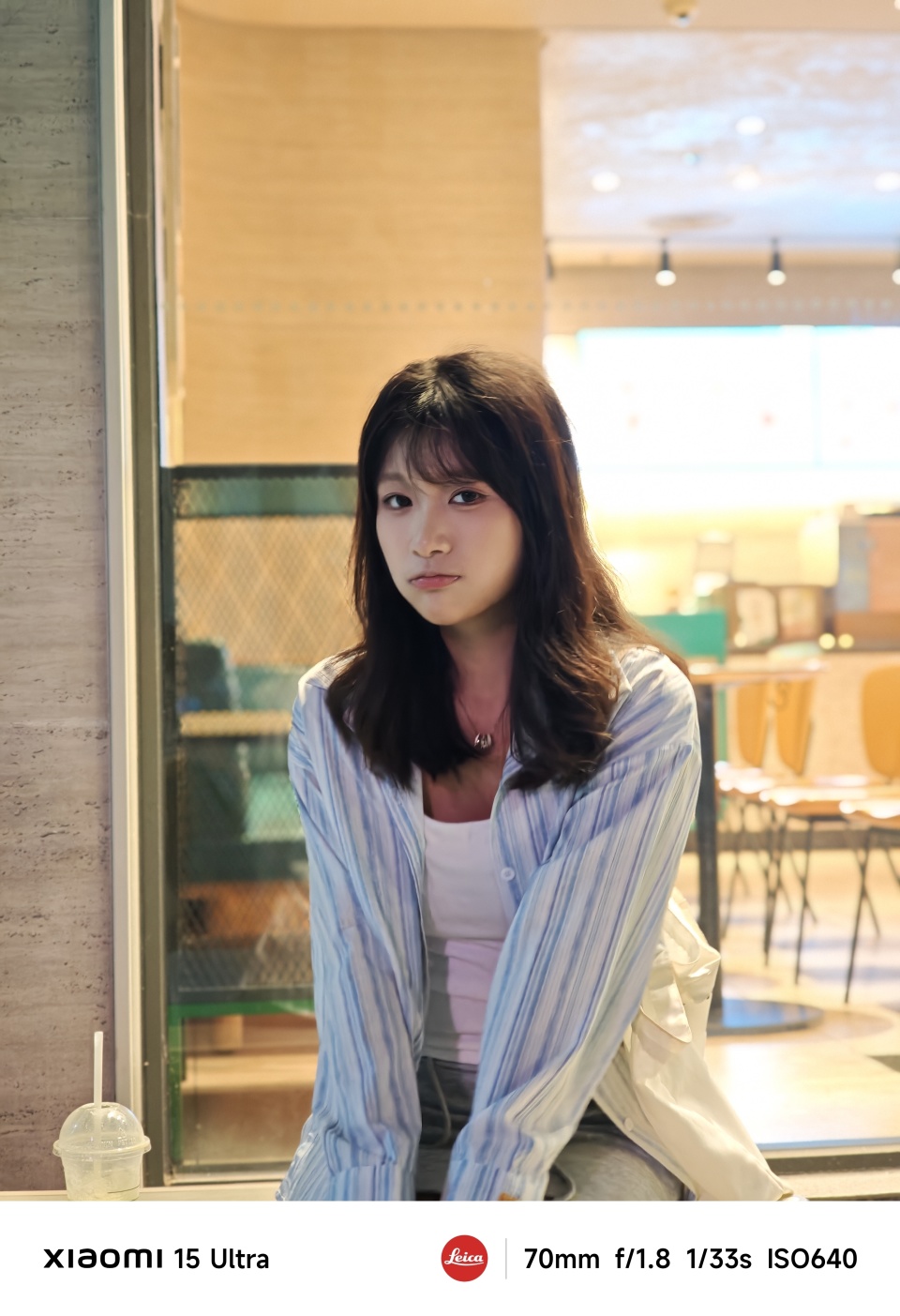
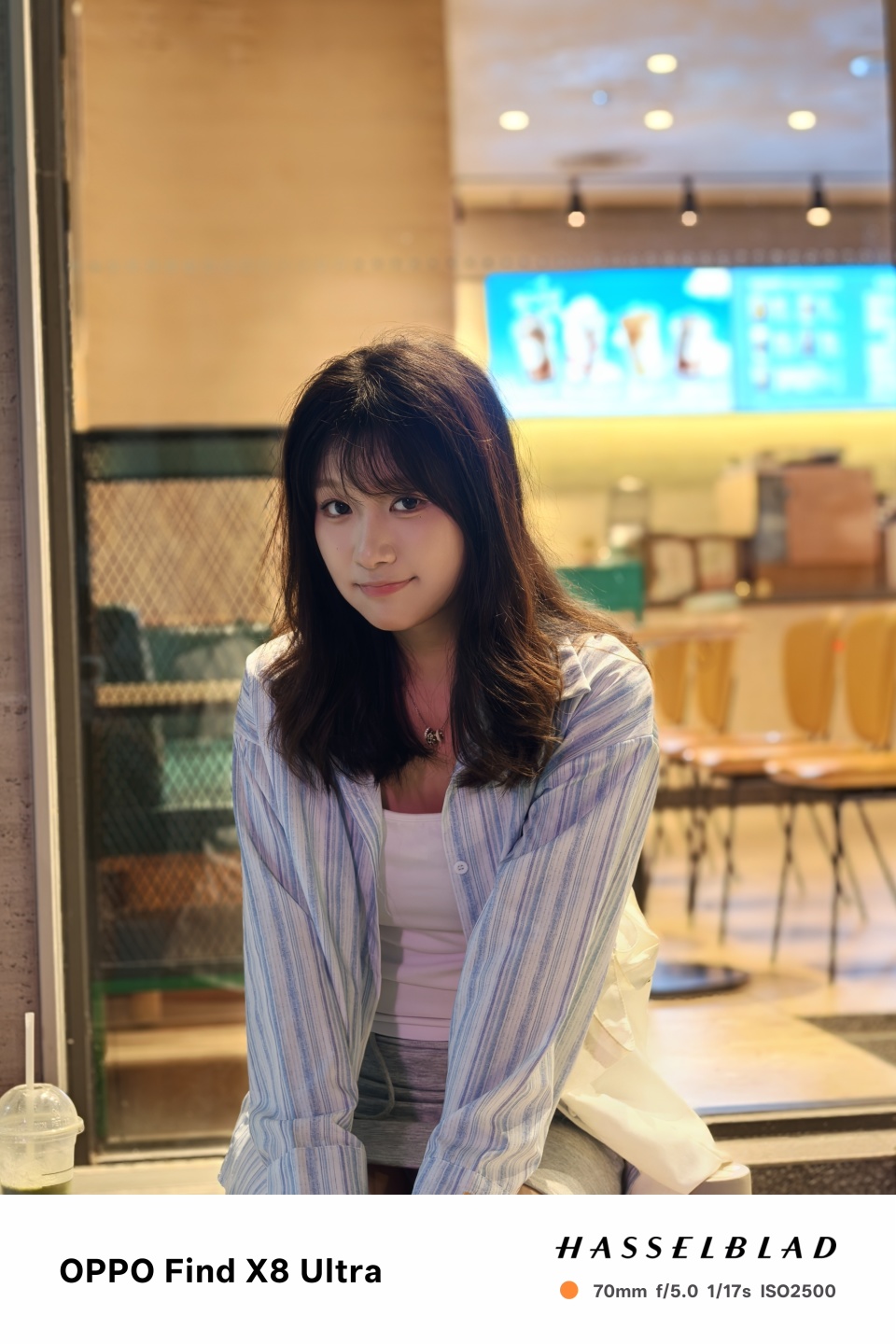
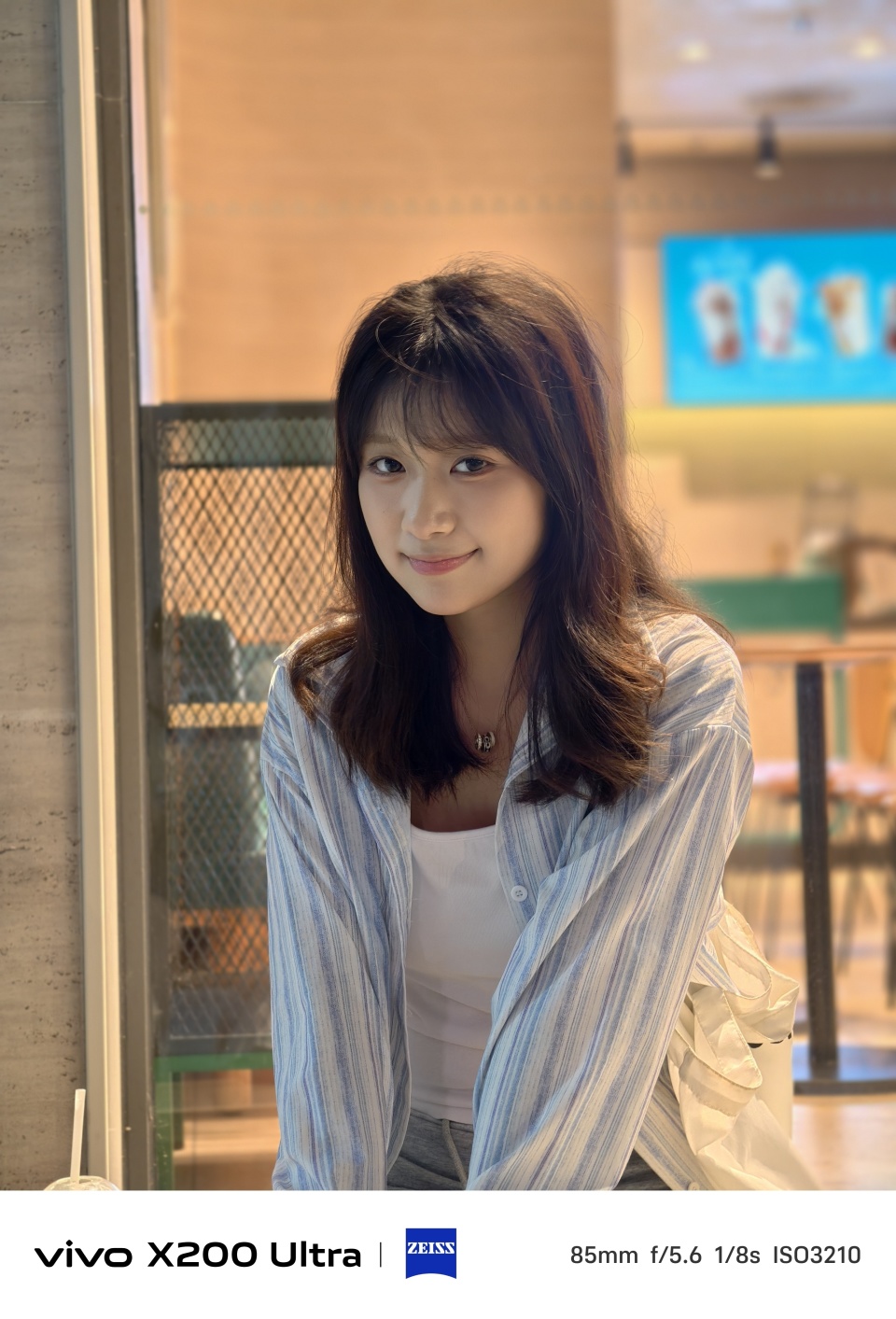
(Image source: Leikeji Production)
It is not difficult to see that OPPO and vivo are still far ahead in the field of portrait photography. However, the vivo X200 Ultra can only produce beautiful photos directly in good lighting conditions. When encountering more "exotic" scenarios, the image color temperature, character skin tone, and even image quality may be affected. The OPPO Find X8 Ultra has obviously put more effort into night portrait photography, especially in skin tone restoration, which is already so strong that it doesn't seem like a phone.
Flagship phones certainly have flagship configurations
After discussing imaging, it's time to return to the peripheral configurations of the products. As mentioned earlier, although flagship phones now focus more on imaging performance, peripheral configurations cannot be compromised. After all, this is the core of the flagship phone experience.
All three phones are equipped with Qualcomm's latest flagship processor, the Snapdragon 8 Gen 2. In theory, there should not be much difference in performance between the three. However, considering that such flagship phones that focus on imaging often do not push the performance envelope too much, we will also briefly test whether there is a significant difference in performance between the three.
First, we use the old friend AnTuTu to conduct a simple test on the theoretical performance of these three phones. From the benchmark data, we can see that the scores of the three are almost identical, with the OPPO Find X8 Ultra being slightly higher.
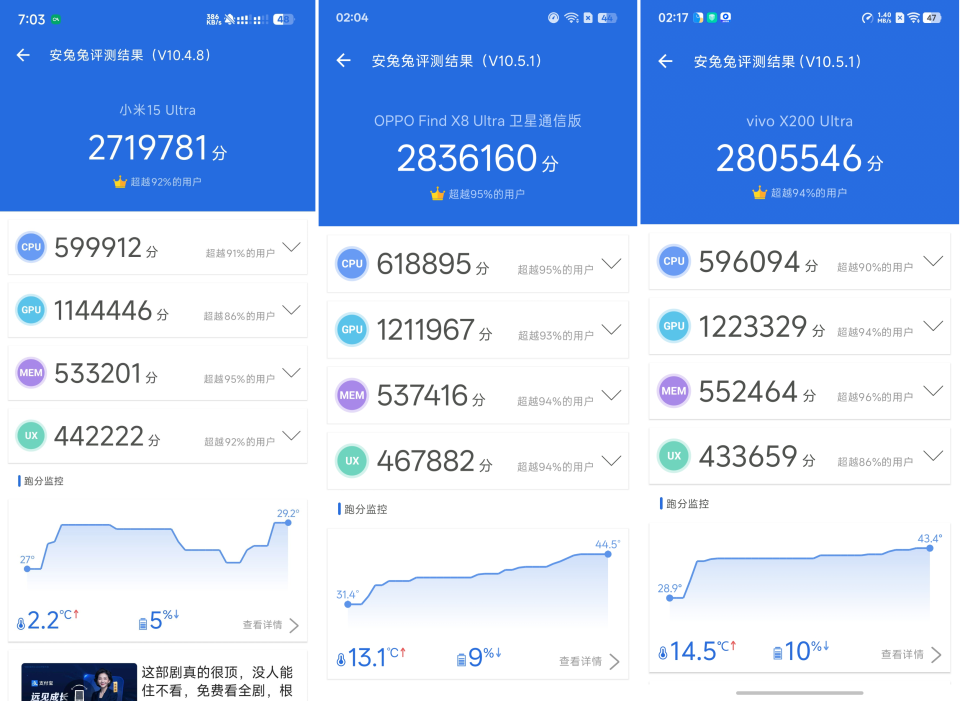
However, theoretical performance does not represent the true performance of a phone. We also need to conduct a game test. Xiao Lei chose "Genshin Impact," a game that is very demanding on performance. We turned on the Ultra graphics setting at 60 frames per second, disabled adaptive graphics, and played for half an hour of running around and clearing monsters to see who performed the best.
From the frame rate chart, we can see that there is only a one or two frame difference in the average frame rates of the three. If we have to compare, the Xiaomi 15 Ultra is indeed the most aggressive, achieving an average frame rate of 60.2 frames. However, the corresponding average power consumption is the highest at 3.62W. Fortunately, the average temperature is only 35.1℃, and it does not feel hot during gameplay.
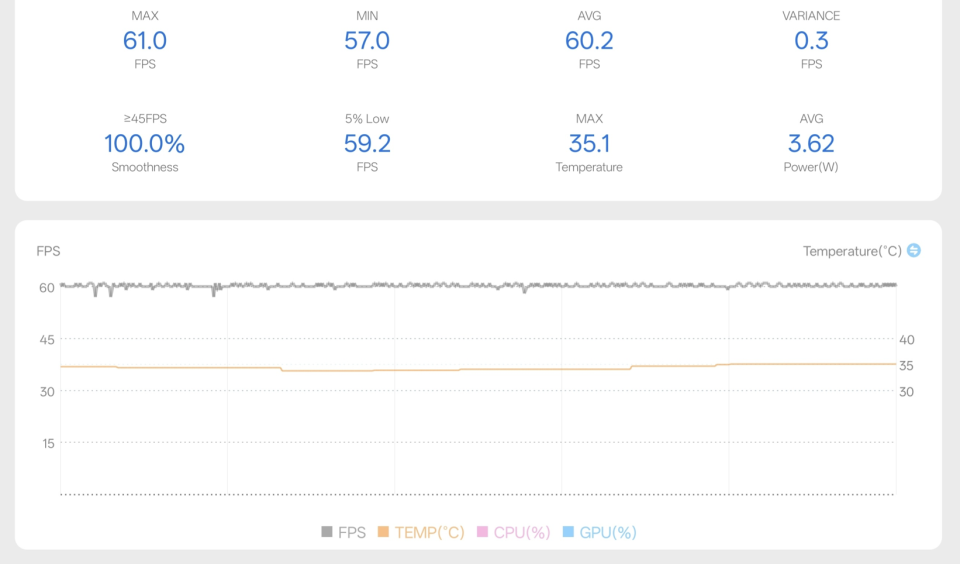
(Image source: Leikeji Graphics)
The performance of the vivo X200 Ultra is slightly "disappointing." Although the average frame rate and power consumption are controlled at a very reasonable level, for some reason, the average temperature reached 44.5℃, making it the "hottest" of the three. However, it is still not hot enough to be uncomfortable.
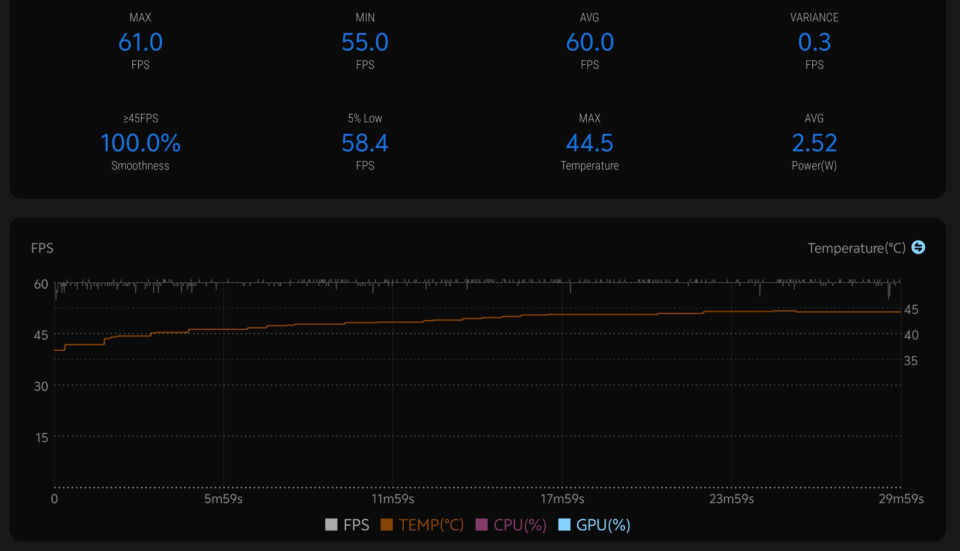
(Image source: Leikeji Graphics)
The OPPO Find X8 Ultra continues its advantage as a "hexagonal warrior," focusing on balance. The average frame rate, temperature, and power consumption are all within normal levels, and its performance is second only to the Xiaomi 15 Ultra.
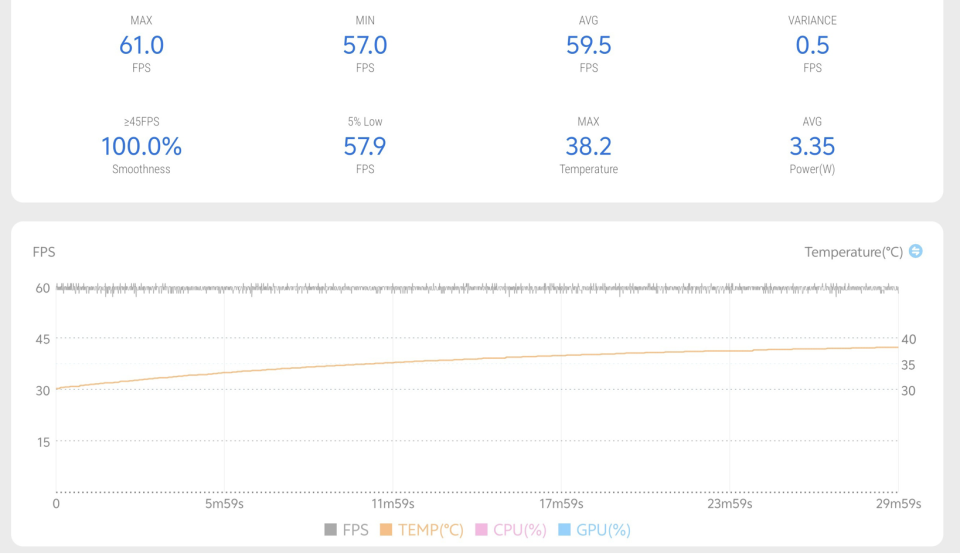
(Image source: Leikeji Graphics)
Of course, performance is only the foundation that determines the experience. Daily use experience focuses more on system-level optimization. When it comes to systems, most users naturally see the UI interface design of a new phone first, and various systems have also undergone some new changes in their latest versions this year, with some becoming more fashionable and trendy, while others maintain stability.
(OPPO system version: 15.0.1.502; vivo version: 15.0.13.6; Xiaomi version: 2.0.122.0)
For example, OPPO Find X8 Ultra's ColorOS 15 is the one with the most significant progress among the three manufacturers. Compared with the previous generation, it is more fashionable and trendy. The overall design concept has changed from aquatic design to a natural style, that is, it pursues more natural physical interactions in the real world, providing a very good visual experience.
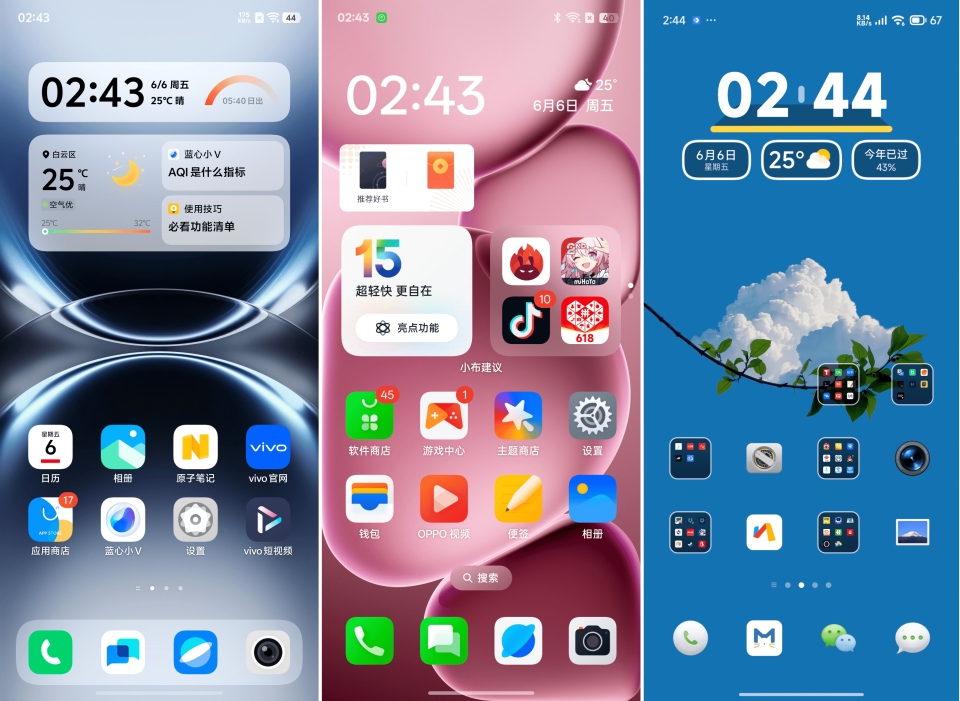
(Image source: Leikeji Graphics)
Vivo's OriginOS 5 and Xiaomi's HyperOS 2 focus more on adding more interactive effects and providing more AI-related interaction modes. Therefore, at first glance, they seem to have no changes compared to the previous generation.
Perhaps good things are instinctively in tune. All three manufacturers have come up with new tricks for the lock screen. For example, vivo's OriginOS 5 supports six new styles such as colorful photos and film filters. OPPO's ColorOS 15 offers nine styles including Healing Moments and Light and Shadow Art. Xiaomi's HyperOS 2 also adds more artistic lock screens to its already diverse lock screen styles.
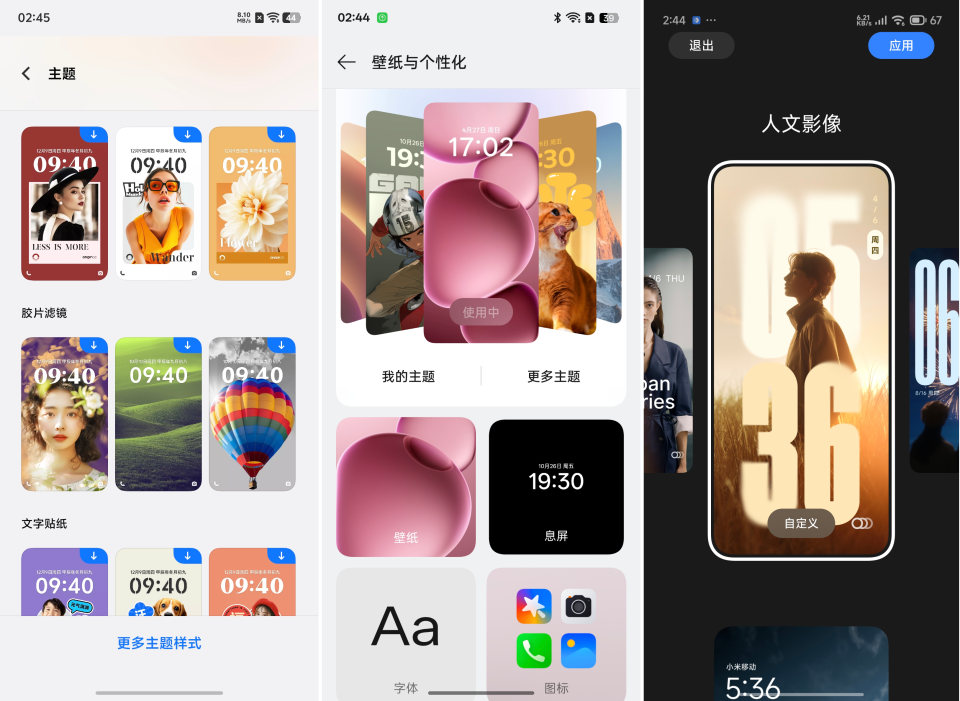
(Image source: Leikeji illustration)
After experiencing these systems, I believe that there have been significant improvements in smoothness across all platforms. For instance, differences in interrupt animations and continuous animations are subtle and mainly attributed to brand specifics. Interestingly, Xiaomi, which previously focused heavily on system functionality, has become more stable with fewer notable changes. In contrast, vivo and OPPO emphasize fashion and trends, attracting young users with vibrant colors, engaging lock screens, widgets, and other features.
When discussing systems, how can we not mention AI? AI has undoubtedly been one of the most frequently mentioned terms in the past year. However, on mobile systems, users most commonly utilize AI for removal and writing. The former helps users effectively remove clutter and sensitive information from photos, while the latter enhances the overall user experience.
Let's start with AI removal.
I chose a tram photographed in the same scene as the object to be removed. This not only tests whether the AI can accurately identify all information points of the tram but also requires it to reasonably combine environmental colors and materials for post-removal filling. It even needs to process the shadow left by the removed object, making it a very challenging task.
Let's get straight to the results. All three performed exceptionally well, perfectly removing the train from the image and applying appropriate shadows and colors to fill the blank space. Unless you zoom in, you won't notice any inconsistencies.
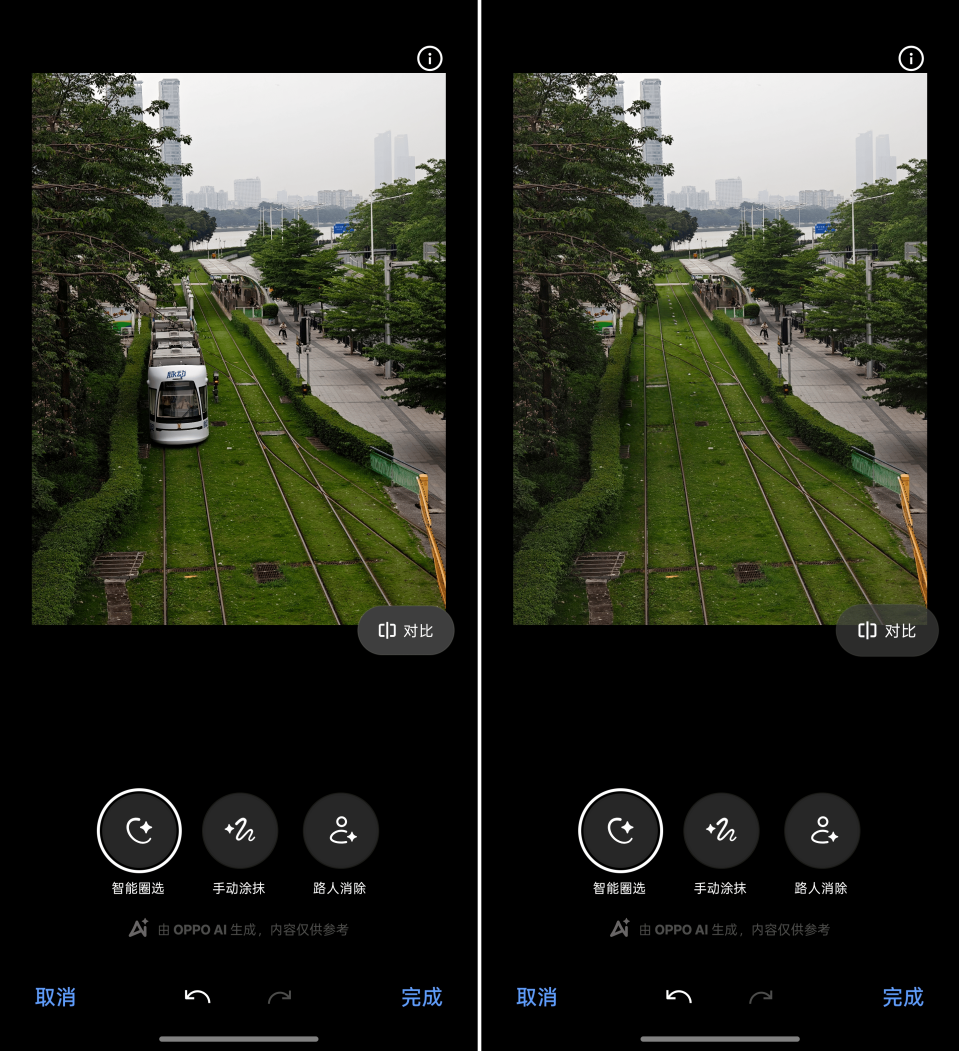
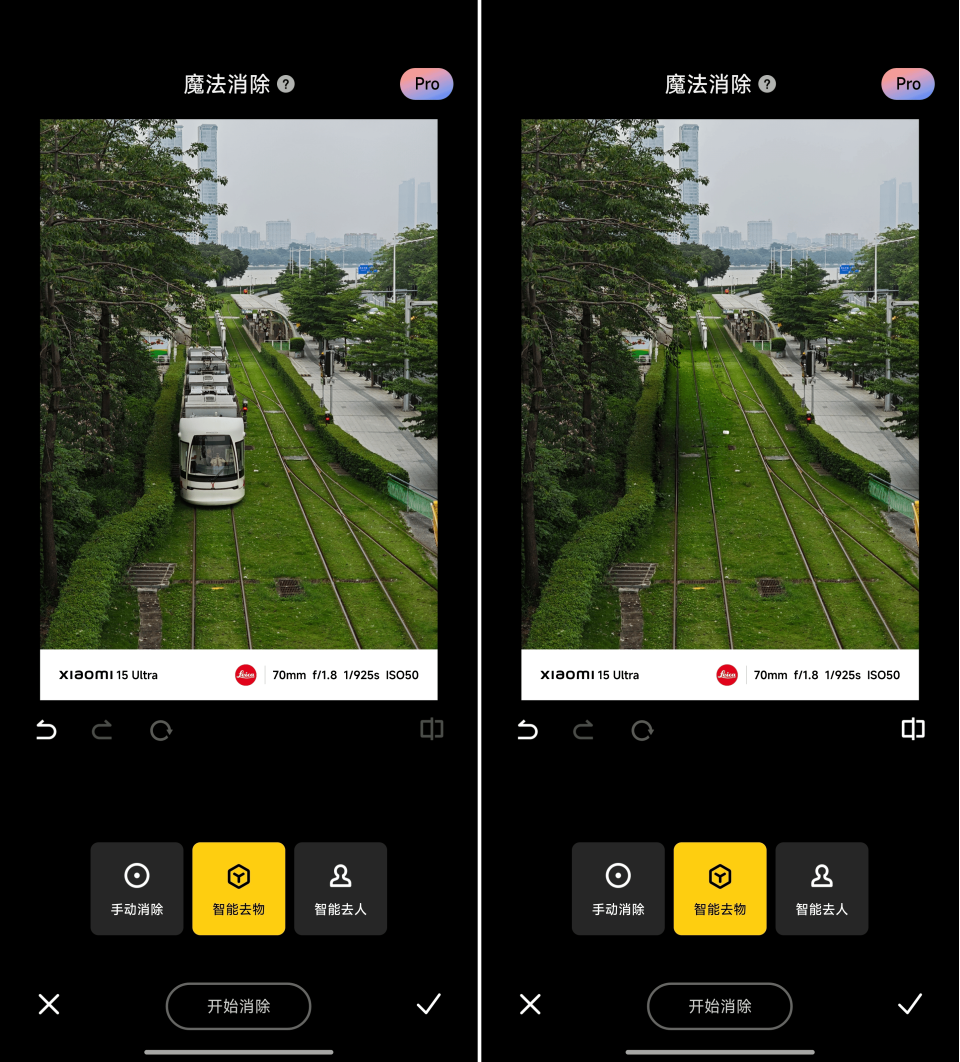
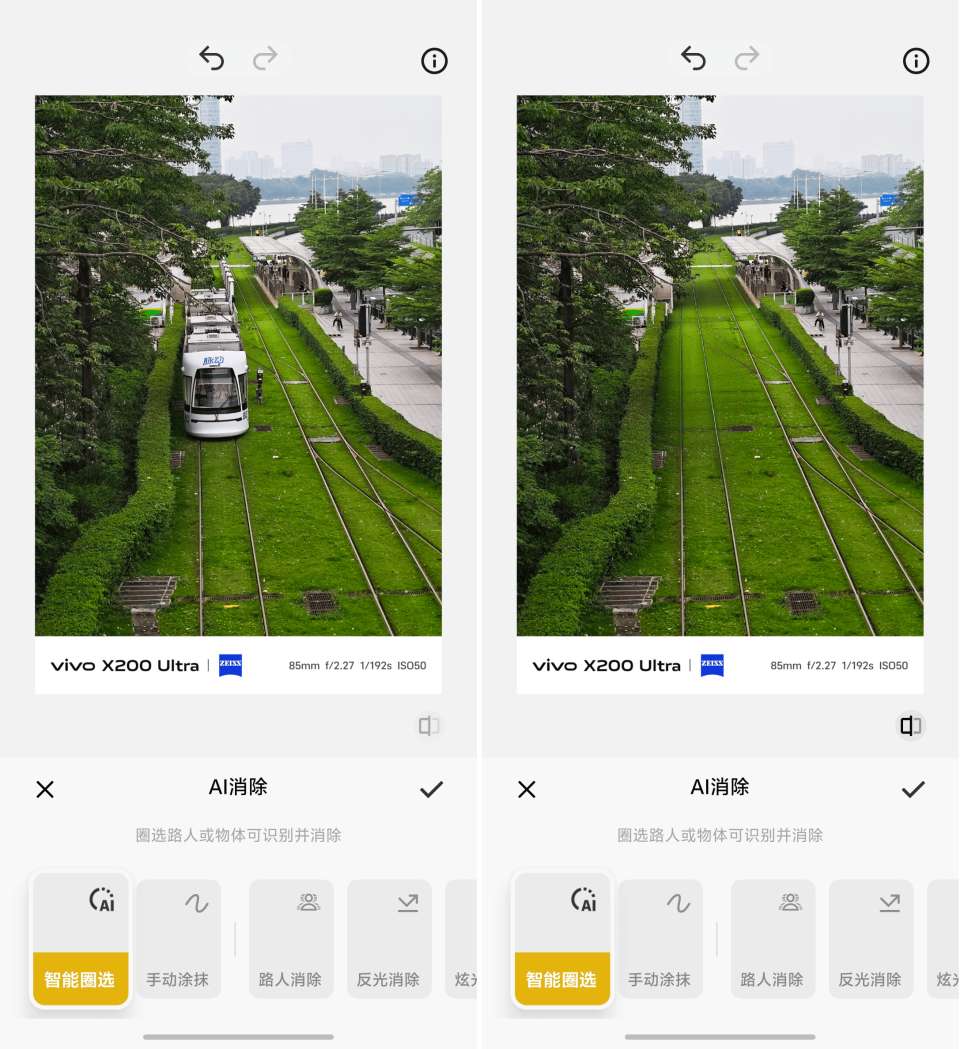
(Image source: Leikeji illustration)
However, there's one small criticism. All three also removed the signal light next to the train. If you want to keep it, I recommend using manual removal instead of smart selection.
For AI writing, we used each brand's native note-taking app, selecting the AI writing function in the notebook section. The request was uniform: "Leikeji is heading to the US to participate in the Qualcomm Snapdragon Summit. Please write a promotional lead based on this premise."
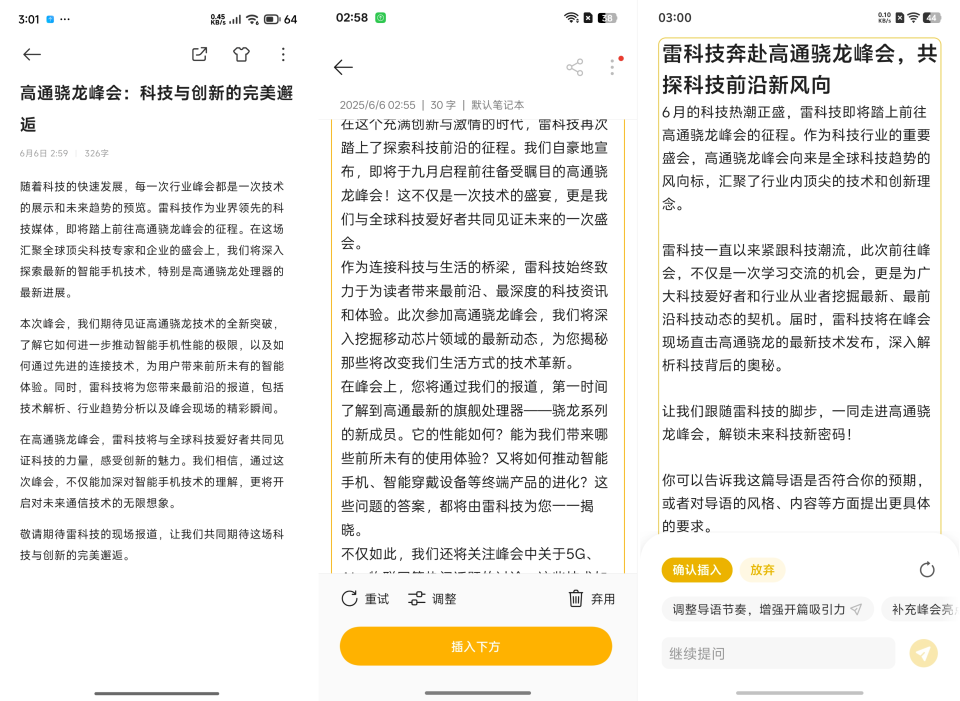
(Image source: Leikeji illustration, from left to right: Xiaomi, OPPO, and vivo)
In practical use, all three phones could generate relevant copy based on input requirements and support modifications and polishing for individual paragraphs. However, vivo's copy was the shortest, resembling a social media post. OPPO's was extremely long but oddly did not include a title. Xiaomi's was balanced, with an appropriate length and a title included.
If we must compare them at the system level, I might vote for OPPO. Although Xiaomi and vivo didn't introduce many new features, their systems were already quite complete. Especially Xiaomi, which still has the most functions and the highest playability among operating systems, bar none. OPPO, on the other hand, emphasizes fashion and trends, incorporating many customizable features and significantly improving smoothness and stability. It's no wonder it's considered one of the most user-friendly operating systems among tech enthusiasts.
All are "Oreo," but which one feels the most normal?
When discussing the commonalities of these three phones, the first thing that comes to mind is their Oreo-like camera module design. Each phone sacrificed handling feel to accommodate more powerful camera modules, larger heat dissipation systems, and higher-capacity batteries, resulting in increased thickness and weight.
For instance, all three use right-angle frames, which most affect grip. Xiaomi and vivo have a larger curvature transition on the screen and rear cover areas. Although this sacrifices visual effects, it does improve handling comfort.
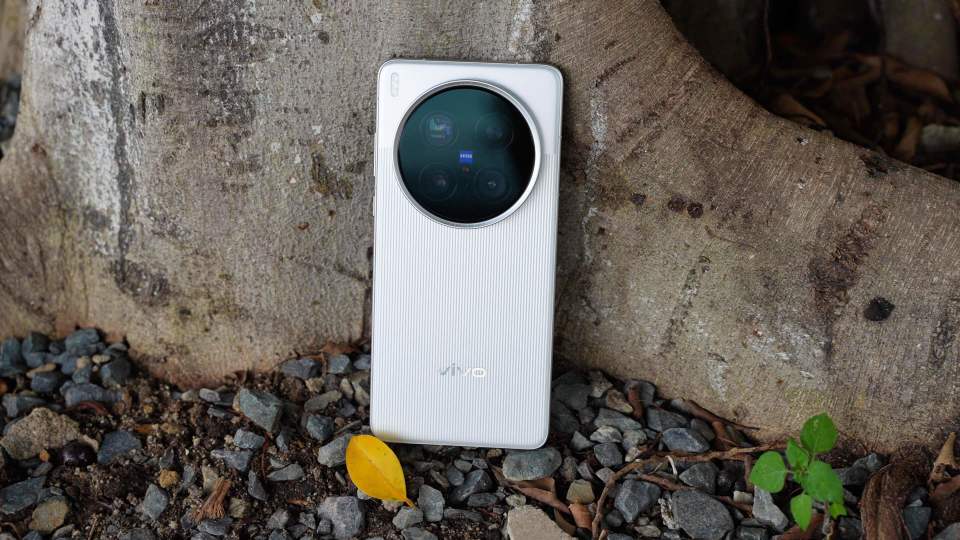
(Image source: Leikeji photography)
So, why doesn't OPPO use a larger curvature transition? Because it's the only one with a flat screen design. Using a large curvature would make the entire phone look bulky.
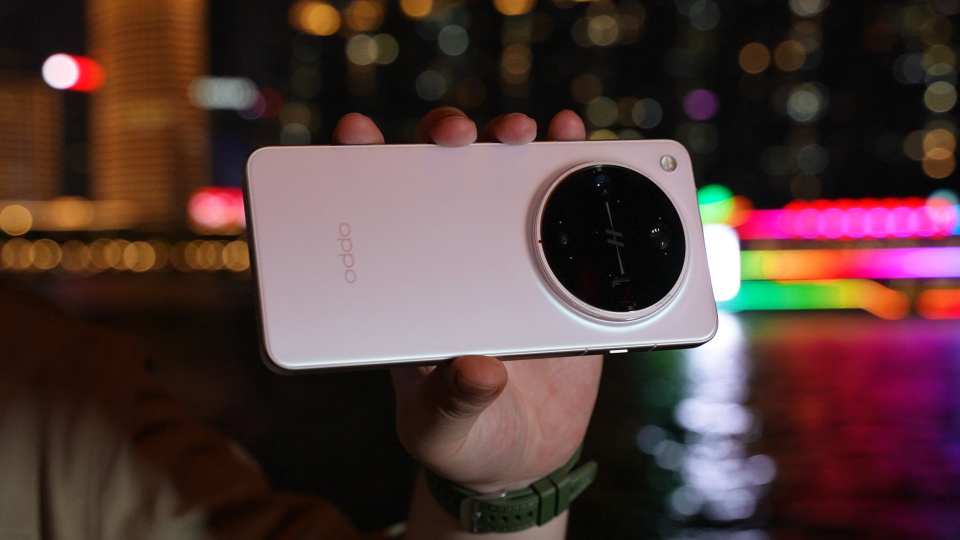
(Image source: Leikeji photography)
To be honest, after using flagship phones for so many years, I'm extremely fatigued with curved screens. However, most flat-screen phones on the market are either low-end or iPhones, which don't interest me. OPPO's attempt with the Find X8 Ultra is quite bold and eye-catching. I wonder if the X9 series will continue this excellent tradition next year?
When I placed these three phones on the desk, I suddenly realized that each one had become a literal "seesaw." With the improvement in imaging capabilities, the thickness of the camera module has naturally become more exaggerated.
So, which one is the most exaggerated?
Unsurprisingly, it's the vivo X200 Ultra. I roughly measured it with a vernier caliper. The camera module of the Xiaomi 15 Ultra protrudes about 5.7mm above the body, the OPPO Find X8 Ultra about 5.1mm, and vivo's figure is quite exaggerated at 6.8mm.
However, this is understandable. The X200 Ultra is the only one among the three that uses a 35mm focal length for its main camera. The longer the focal length, the greater the physical focal length required, and the more severe the camera bump becomes.
As a result, the vivo X200 Ultra is the most top-heavy among the three. It's a trade-off. I hope that next year vivo can strike a balance between handling and imaging. After all, an imaging flagship is still a phone, and it's used for daily tasks far longer than for taking photos. If the handling feel is compromised, users may hesitate to make a purchase, no matter how powerful the phone is.
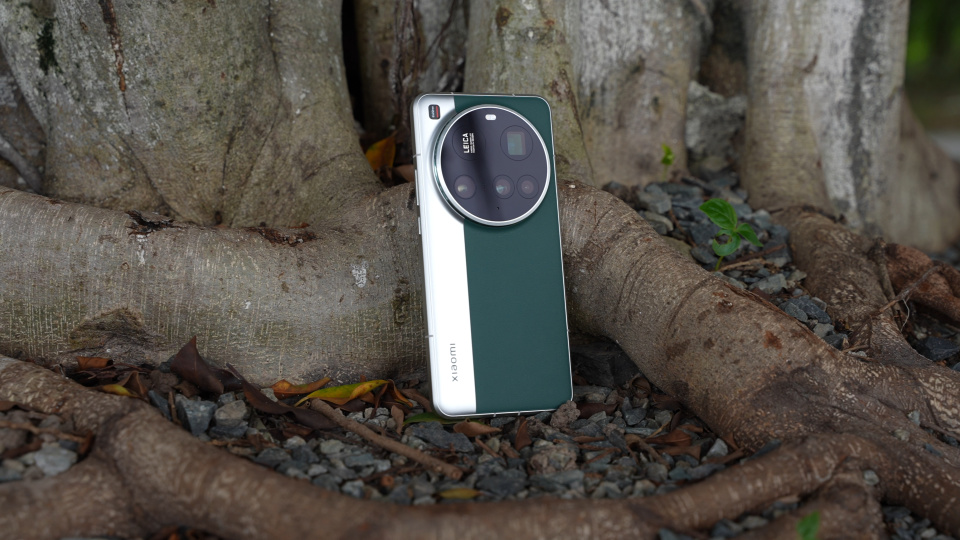
(Image source: Leikeji photography)
Let's briefly discuss color options, which many readers may not care much about. OPPO and vivo offer three colors each, while Xiaomi offers four. Xiaomi is the boldest in color selection among the three, with black-silver and silver-green color-blocking schemes that make it resemble a professional camera. Given their Ultra positioning, it's indeed appropriate to be more "extreme" and bold in color choices.
If we only talk about design and handling, I'd prefer to vote for OPPO. The reason is simple: it's the only flagship with a flat screen, and it does a great job in terms of handling and grip feel.

(Image source: Leikeji illustration)
For other specifications, I'll present them in a table for easy viewing.
Summary: All are top-tier flagships, difficult to determine a clear winner
Returning to the question of which small-screen flagship is the strongest, Leikeji briefly summarizes for you:
Xiaomi 15 Ultra:
Pros: Innovative design, strong photographic styling, aggressive performance release, highly playable system;
Cons: Average portrait processing.
OPPO Find X8 Ultra:
Pros: The only flat-screen flagship, excellent hardware-software integration, the most sophisticated portrait algorithm, highly completed system;
Cons: A few minor system flaws need addressing.
vivo X200 Ultra:
Pros: Extremely high imaging quality, numerous imaging-related features;
Cons: Average color processing in extreme scenes, only 30W wireless charging, average system playability.
After in-depth experience, it's difficult to choose one product that stands out among the three. All have balanced configurations and their respective advantages.
However, from a daily comprehensive use perspective, the OPPO Find X8 Ultra better fits my definition of a top-tier flagship. Whether you need superior imaging, flagship performance, or a more professional screen, it can perfectly meet your needs. Although it has some shortcomings, it's indeed the only one among the three that can be called a "hexagonal warrior.""If you're looking to purchase a flagship phone that doesn't pursue single-point excellence but excels in every aspect, the OPPO Find X8 Ultra is definitely one of the best choices currently available.

